#update: updated name to match official sources
Explore tagged Tumblr posts
Text
不眠之夜 from WHITE NIGHT Jason Zhang, 李崎, 往人不识, Eli.W, TSAR, HOYO-MiX
#hsr#honkai star rail#white night#penacony#main theme#penacony:main theme#jason zhang#hanpu cui#kexin wang#vocal track#eli.w#tsar#penacony theme song (chinese version)#update: updated name to match official sources#hsr:vocal track#李崎#往人不识#hsr:theme song
42 notes
·
View notes
Note
hello, yuurei-san! do you know why 'land of pyroxene' was changed to 'the shaftlands'?
Hello hello!! Thank you for this question!
From what I can tell, it seems like Land of Pyroxene was changed in some places, but not in others!

"Shaftlands" is what is listed on the in-game world map on JP!
In fact, all of the country names are listed in English and nothing else, and a quick search results in many JP-server players back in 2021 trying to match up these English-language names to the Japanese-language names with which they were familiar (the map was not released on EN until 2023).

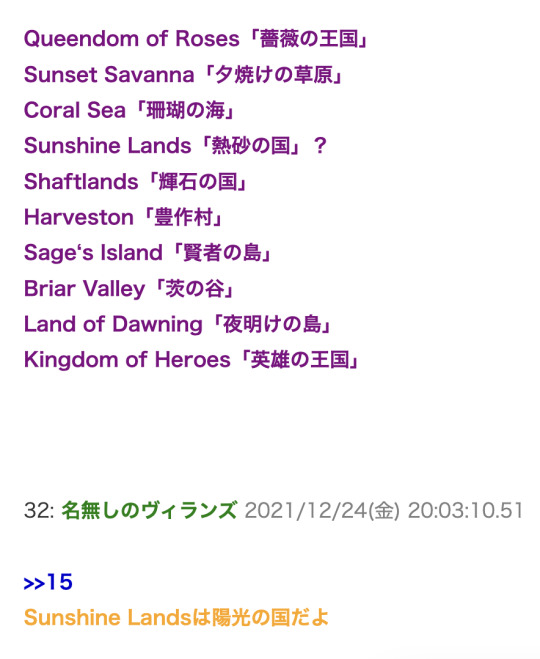
From what I can tell, the English-language names "Land of Pyroxene," "Isle of Lamentation," etc., came from fan translators working from official sources like the game guide and the in-game character profiles:


And those profiles are where things have been changed, with Vil's "Land of Pyroxene" hometown being updated to "Shaftlands."

(Upper left: "Island of Woe" in English seen above 嘆きの島 on JP-server, confirming that the 嘆きの島 from Idia's JP profile and the English "Island of Woe" from the in-game map are two different names for the same place)
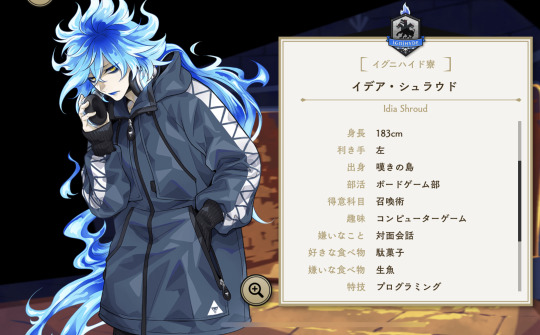
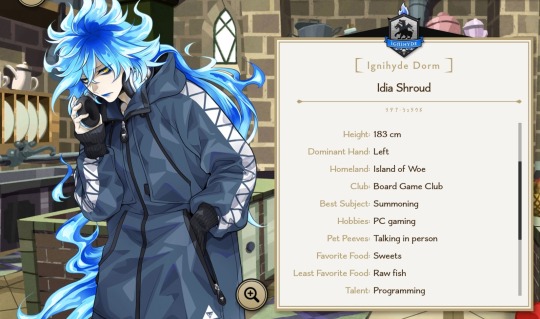
It is very curious that the map is exclusively in English (a language that the majority of the players on JP-server probably do not speak--it is difficult to imagine the same thing happening in reverse, with an EN-server map being posted exclusively in Japanese), and I wonder if it might be for world-building purposes.
It is briefly touched upon in the first novel that the language being spoken in the world of Twst is not actually Japanese:
"While he is trying to speak his own language, his ears and mouth seem to be translating in and out of a language he does not know."
⚠️Disclaimer: the novel and the game are very different in some places and this might not actually be relevant to the game at all⚠️
We do not know if it is English or some other language entirely being spoken in Twst, but it is possible that the map was crafted in English to help recreate that feeling of foreign-ness and unfamiliarity that the prefect should naturally feel as a stranger in an unknown world, while still being recognizable enough for fans to be able to find out what things mean by googling (which they wouldn't be able to do if the developers had made up an entirely new language).
So maybe the first names we received in profiles and dialogue are what the names mean, but the map is possibly meant to be what a character within the world would see, when looking at it? A little like a map from Lord of the Rings being written in Elvish, except the Elvish is English :>
That may be why there are two names for all the countries: a version for the players (Land of Pyroxene) and a version for the characters (Shaftlands).
There is only one version of the names published on the EN server, with "Land of Pyroxene" changed in the profiles of characters like Jack and Vil, but "Shaftlands" as an alternative reading of the country's name existed on JP before the EN-server was launched. It is a curious situation!

(Bonus: I have begun to suspect that the best parallel for the JP server's use of English (using the English word "Chapter" in Book 7, on the map in Book 6, etc.) may be similar to how the English language uses French:


While the JP server ends scenes with the English word "END," the EN server ends scenes with the French word, "Fin." So a better parallel might be English is to JP as French is to EN?)
91 notes
·
View notes
Text


Hey I just wanted to give you guys a little insight into several projects I'm working on.
So first of all, some of you might remember me mentioning being sick earlier this summer. I was bedridden for like 2 months, and my health has been bad ever since, getting sick again every couple weeks.
Because of that I accumulated a bit of back log of cards to edits that were released since then. I mentioned before, starting with EX5 the english twitter previews started having the "SAMPLE" text pasted on it as well, but since around EX6 the quality of the previews has also declined significantly. Despite being the same pixel size as the japanese previews, the english ones have a lot more jpeg artifacts now.
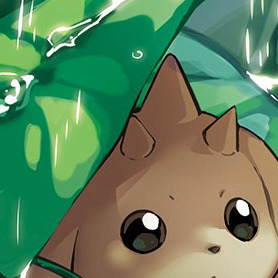
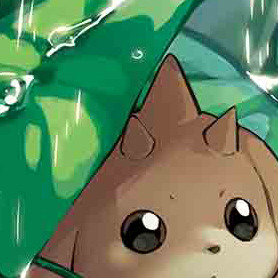
[Left a cutout of EX6 Lopmon's japanese twitter preview, right the same section from the english preview]
Working with these now increases the amount of time I need to spent on each card, which really adds up with over 100 cards per set.
Besides the current card releases, I'm also slowly working my way through earlier sets trying to enhance the cards as best I can.
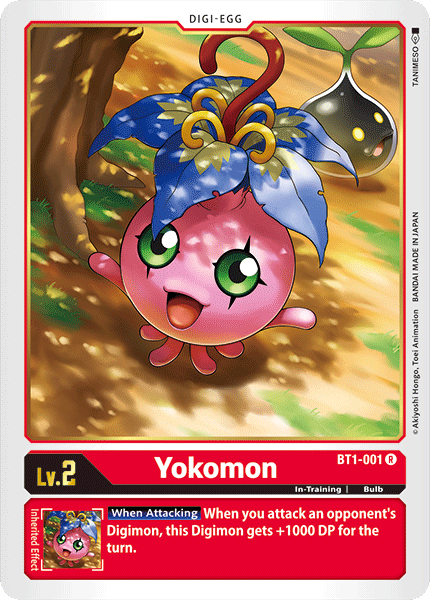
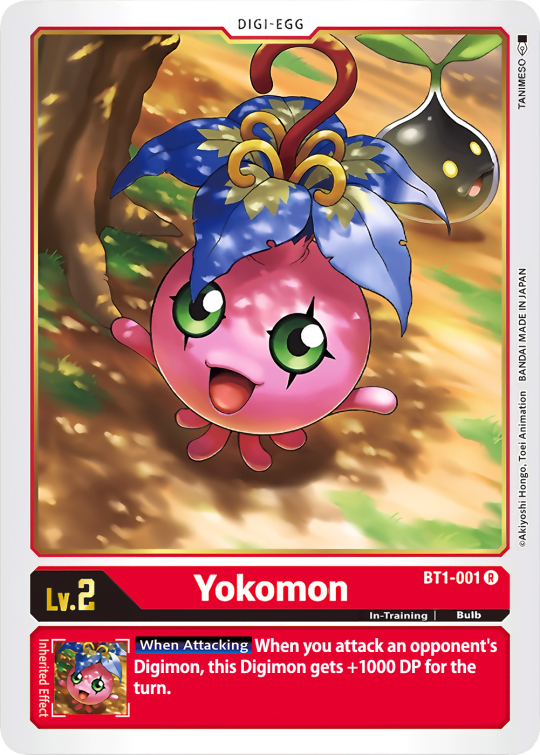
[Left BT1 Yokomon from Bandai's online card list, right my edit]
In the process I use multiple sources, trying to find the highest resolution I can find for the image and do color corrections if necessary. I also decided that instead of favoring "authenticity" I'll favor legibility, meaning I will paste in keywords I sourced from higher resolution cards, and in some cases retype the effect text entirely.
This is a very slow process, and is lower on my priority list so the progress is not very far. My goal is a complete library of all cards.
Another thing I'm working on is the Un-Dub Project, which I had previously introduced to you before.
I plan on assembling my edits in "packs" so people can decide themselves how much change they want. This will include the options from my original poll as respective levels, as well as a Tamer Pack.
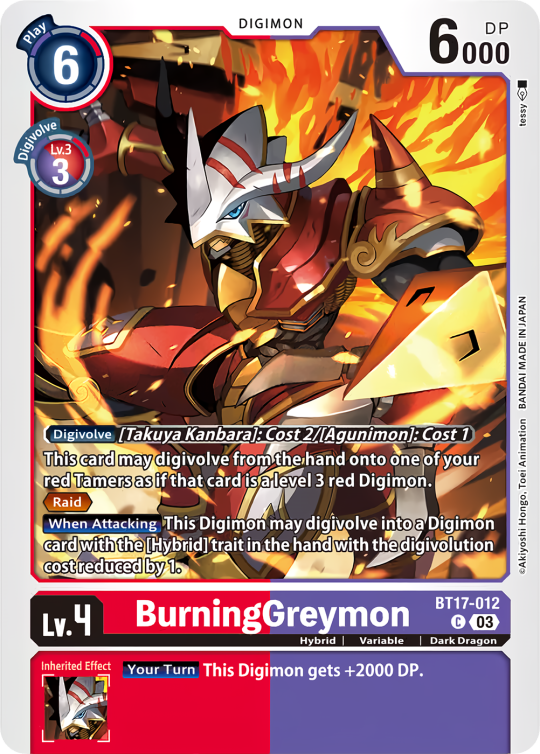
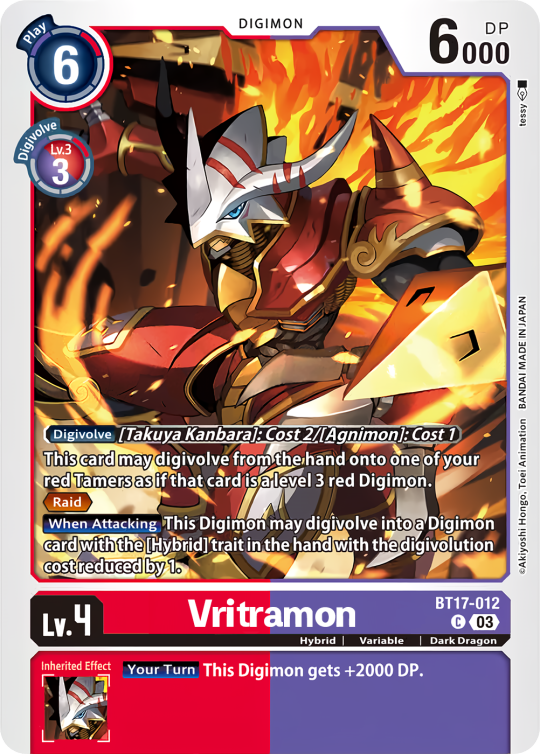
[Left BT17 BurningGreymon, right my edit changing the names to Vritramon + Agnimon]
People will have to mix and match at their in discretion, being aware of card interactions etc.
Next is a bit of a smaller project, the Errata edits. Most cards that got Errata had their already fixed versions released as previews, but are printed incorretcly. Some however got their Errata after the preview releases, in which case I'll edit the card text accordingly.
The official card list will have the correct text, but those have very low resolution.

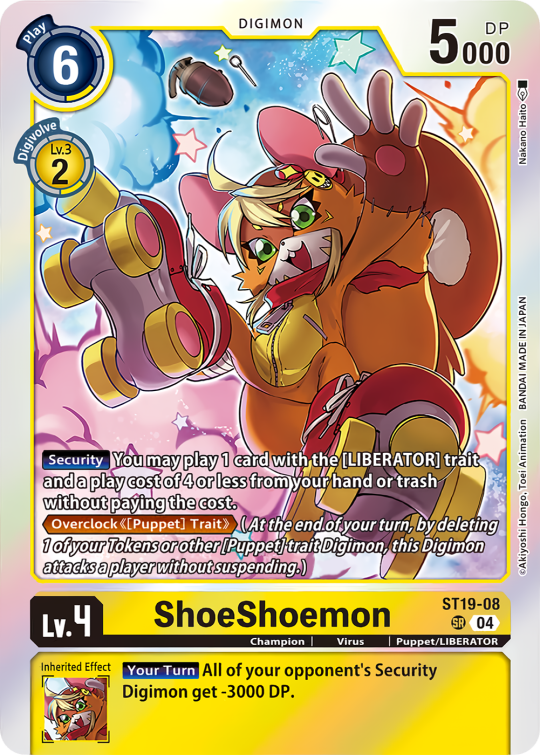
[Left original preview of ST19 ShoeShoemon, right my edit with text errata]
When releasing the Errata pack I'll include Errata cards that I didn't edit as well, in order to represent the full list and not cause confusion.
Finally I have a little passion project of doing edits of all cards with <rule> updates.
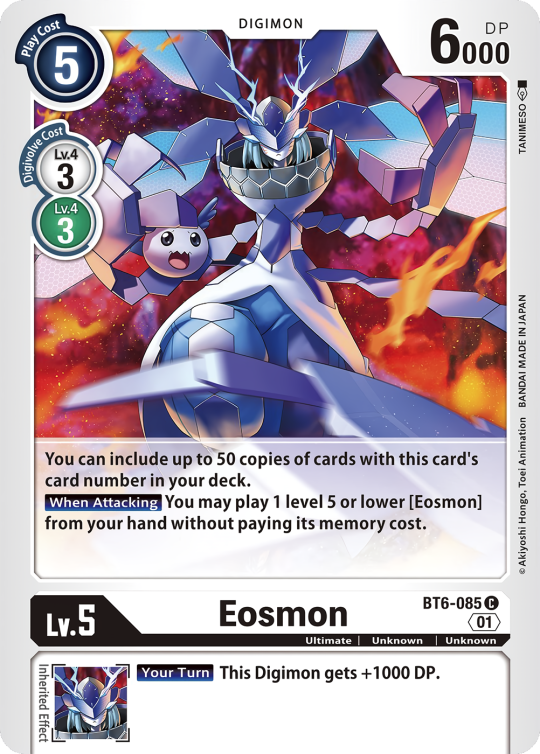
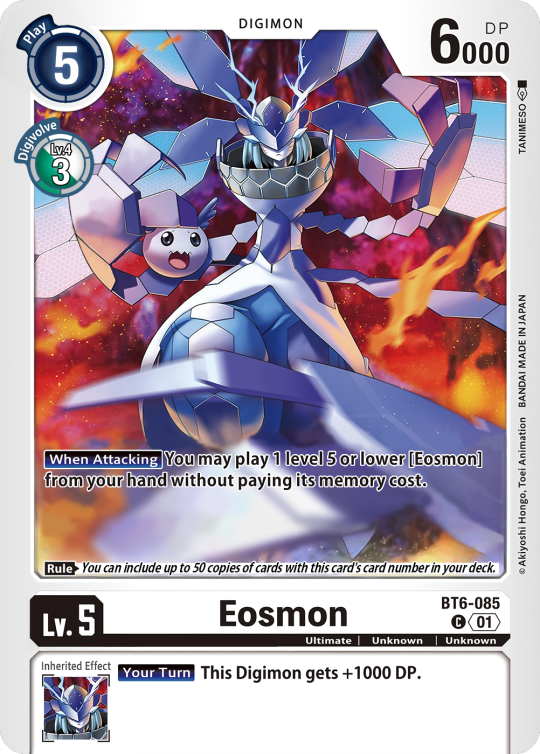
[Left BT6-085 Eosmon, right my updated rulings edit.]
This is gonna get a little technical, so bear with me. As per the rules Effects don't trigger in the breeding area. Before the <03> card layout revision, additional rules were included within the effect text. This resulted in card interactions not working as intended.
For example, BT11-063 Geremon has the effect "The name of this card/Digimon is also treated as [Numemon]."
But going by the rules, this would not be in effect in the breeding area, so for example Numemon X, which can evolve from Numemon, would not be able to evolve from Geremon in the breeding area.
With <03>'s introduction of the <rule> box, this was fixed, and some cards have been revised with this new <rule>. But as always, no reprints.
This is the edit-heaviest of my projects, as I felt inclined to not slap the <rule> box on there, but remeake the entire card in the new layout style to go along with it.
#digimon#digimon tcg#digimon card game#digica#デジカ#digisafe#lov speaks#blog update#personal#digi lov edits
16 notes
·
View notes
Text
Dota 2 (2013)
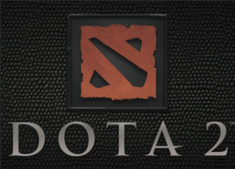
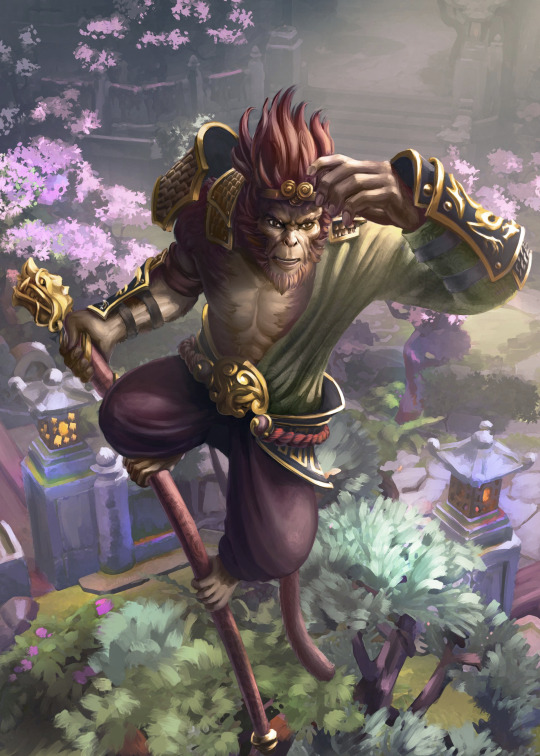
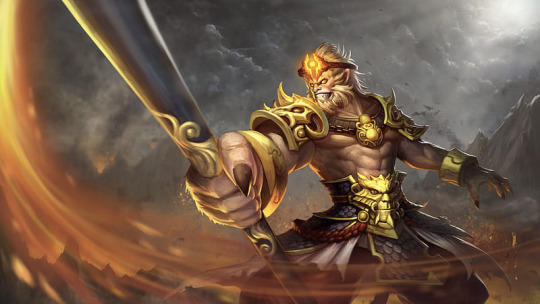
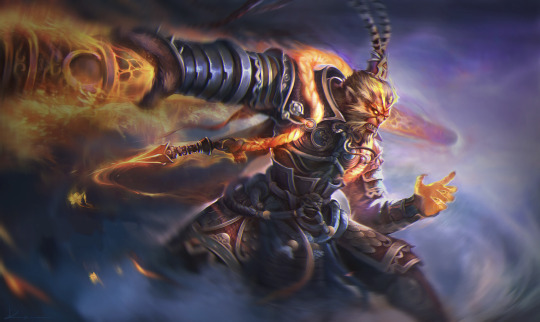
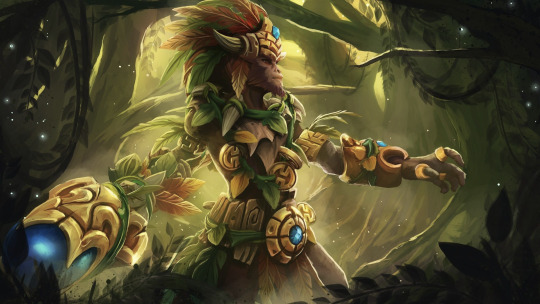
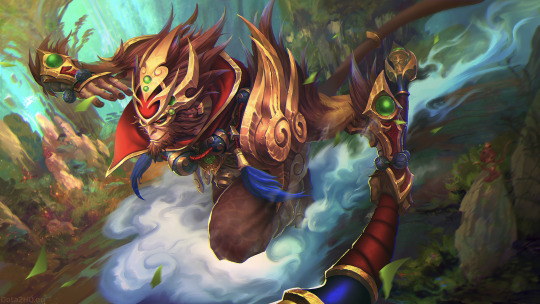

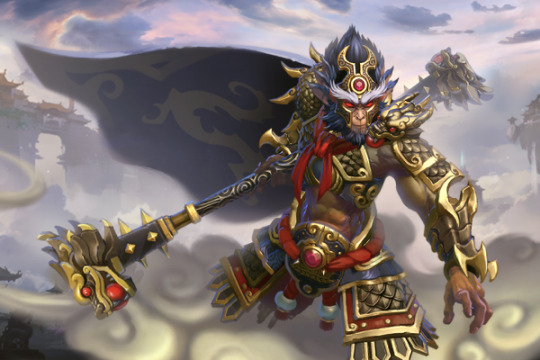

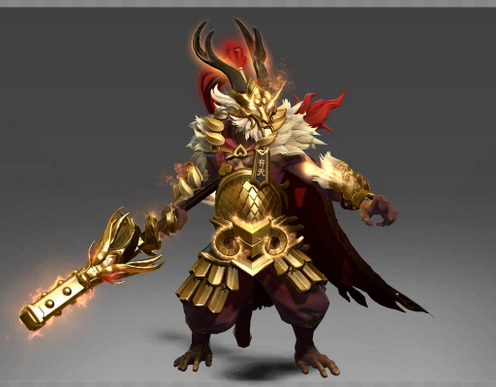
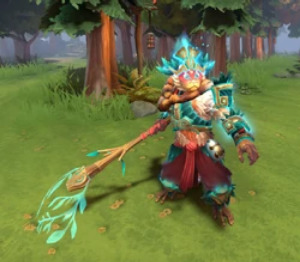
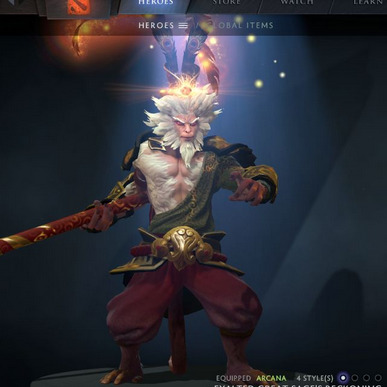

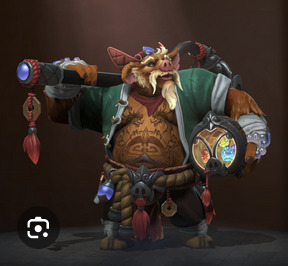

Date: July 9, 2013 Platform: Mac / PC / Linux Developer: Valve Corporation Publisher: Valve Corporation / Nexon Corporation / Perfect World Entertainment Genre: MOBA Theme: Fantasy Franchises: Dota Also known as: Defense of the Ancients 2 Type: Crossover
Summary:
Dota 2 is a free-to-play high fantasy action real-time strategy game developed and released digitally by Valve for the PC, Mac and Linux on July 9, 2013.
Built on the studio's Source engine, Dota 2 is the official sequel to Defense of the Ancients, a series of custom scenarios for the 2002 game Warcraft III: Reign of Chaos that originally popularized the "Multiplayer Online Battle Arena" sub-genre. Development of the game is led by the original mod's final lead designer, IceFrog.
Similar to the original mod, the main gameplay pits two five-player teams (the Radiant and the Dire) against each-other as they work to escort their three endless waves of AI-controlled monsters (or "creeps") to the fortified enemy base in order to destroy the enemy "Ancient". Each player controls an individual Hero character and, throughout the match, earn experience (to level up their stats and abilities) and gold (for purchasing items and equipment) by eliminating enemies.
Rather than using a weekly free-to-play character rotation system (similar to other MOBA games at the time, namely League of Legends), the game makes all characters playable from the start and features cosmetic microtransactions (such as alternate appearances for each Hero's armor and weapons, alternate announcers, and custom UI enhancements) using the Steam Inventory and Steam Market systems.
The game received numerous updates since its original release, adding new Heroes, game modes (including support for custom modes), and features while revising certain gameplay mechanics. New features include better support for both new players (with integrated community-made guide support, coaching, and improved training modes) and competitive players (with improved replay and spectator support), as well as VR headset support (for spectating and viewing cosmetics). It also received a reworked client update in June 2015 (named "Dota 2 Reborn" for a short time), porting the game to Valve's Source 2 engine (the first game released with it), and received a complete map revamp on April 2023.
Dota 2 originally received an invite-only beta in November 2011, during Gamescom 2011. It was formally launched July 9, 2013, but access was gated via a queue system until December 16, 2013. It was also distributed as a standalone game in some regions, with Perfect World publishing the game in China, and Nexon publishing the game in both Japan and South Korea. The game also received spin-offs, including the 2018 digital card game Artifact, the 2020 "auto-battler" game Dota Underlords, and the 2021 animated series Dota: Dragon's Blood.
Source: https://www.giantbomb.com/dota-2/3030-32887/
Link: https://www.youtube.com/watch?v=LqtkfCLjJz4&ab_channel=DotaCinema
#Dota 2#Defense of the Ancients 2#jttw media#game#video game#crossover#sun wukong cameo#sun wukong#six eared macaque#liuer mihou cameo#six eared macaque camero#zhu bajie
22 notes
·
View notes
Text
UPDATE: the offical police report of the wilson/claire case has finally been released. i'll link it here, but i don't think it explains everything, since a good amount of the details have come from witnesses and locals that havent been contacted by the authorities regarding the story. so, for continuities sake, i'm gonna give a final summary on here before i close out their case on this blog.
the timeline i've put together relies partially on an official statement released by claire (who still refuses to provide a last name to the public, and has no official documents connecting her to any identity living in mourning star), who has initiative to lie. however, i matched her story up as many other sources as i could, so i'm pretty confident on this being correct but just keep that in mind.
after meeting him in september at a party, she and nicholas began spending a lot of time together. claire states that he faced severe struggles with his mental health including attachment issues- he was "so sad, all the time. he couldn't stand to be alone. i didn't know why."
claire had always had many dreams of what she calls 'a bigger life', which she often told him about but he did not share. but due in part to his anxious attachment disorder, she was eventually able to convince him to run away with her so they could be 'together, away from their small town', as she claims.
the details are fuzzy at this point, as she seems to contradict herself often in regards to the actual murder, but she claims she had reason to believe that Sears was attempting to attack her, and that she alone acted on self-defense. there are no witnesses to this other than nicholas who is not providing a statement; however, the lack of a murder weapon points to the idea that it was not premeditated, as the death was caused by sudden blunt force trauma.
she then claims that, very soon after the murder, Wilson started to fall sick and needed lots of treatment. this allegedly led claire into a cycle of systematic robberies, which she used to 'care for him'. this is also proven by the fact that he was found to be suffering from an unknown illness, in addition to his various injuries, upon rescue. she also claims that she stole a car belonging to a local, who does not want to be named at this time, because nicholas's had been crashed and the winter was too harsh for them to survive in the cold.
her story then details their living in the woods and how he was "barely concious through the whole thing. like- [she didn't] even think he realized he wasn't at home". this leads officials to believe that the entirety of their time spent running from the police was planned and carried out by claire, without wilson's discreton at all.
when questioned about his injuries, she states that she returned to the car they had been staying in to suddenly find him in his current condition. from there, she tried to drive him to the hospital, but he alledgedly attempted to climb out of the moving car. "he had been hallucinating the past few weeks. i think it was from fever, or dehydration? something. probably a mix of things. but he'd been really sick. [...] i think he saw something and left [the car], i found him away from it. i really don't know what happened." she never mentioned any plan of hurting him in her confession.
nicholas, however, has refused to speak on his side. he has recently been discharged from the hospital, but despite being questioned he has not made any statements.
so there you go, that's all i know. if you have any last questions, you can ask me, but i'm not sure how many more answers i can give.
5 notes
·
View notes
Text
Voting Is Powerful
Hey US peeps! Now is a great time to check your voter registration, register to vote, or update your address on your voter registration before the election in November.
Why? Because, whether you have strong feelings about candidates, measures or not, it is a privilege to be able to vote and use your voice in your community. Not everyone has that privilege. That's just it!
The more citizens who vote, the more our elected officials can represent a majority of our citizens. Rarely is there over 65% voter turnout. And the average for most elections is much much lower.
If most citizens don't normally vote, it is very powerful when most of us do vote.
(tips and resources below cut)
See also EAC.GOV for the US election assistance committee.
Check & Register To Vote
Each state has an office of the Secretary of State (go to https://sos.[Insert your state name].gov) which deals with elections and voter registrations. You may also update your voter registration from your state's office, view candidates and measures, and much more depending on how they have set up their system. It is my understanding that each county has an elections office that has a similar website.
Each state also has different laws concerning voting. Make sure your registered name matches your ID as well as your address. Be especially careful if you have more than one last, middle, or first names.
Examples:
Oregon Secretary Of State Elections
https://sos.oregon.gov/elections
Clackamas County Elections
https://clackamas.us/elections
Voting Tips For Newbies:
We all know politicians are not known for honesty but how can we trust they will be more inline with your personal world view than other candidates? This is based on my personal routine. I've voted and lived in multiple different states across the country. Here are a few helpful tips. I've been lucky and have only needed to use numbers 1 & 2, and 3 very seldomly.
1. Read a voter's pamphlet - (see also secretary of state websites) look at endorsements; especially teachers, unions, police, chamber of commerce, other politicians, PACs created by special interest groups; buzz words mentioned, types of past experience. This is a job interview and you are their new boss.
2. No pamphlet? Quickly search the internet. Look at a local paper interview, their personal website, any endorsements, etc.
3. Visit your local elections office's website (state, county, federal) or write them asking for information if you really feel up to a challenge. This is your right to be informed.
4. When all else fails, spend 20 minutes at the library for important elections. Librarians are happy to help with specific questions, as long as they are fact based and researchable.
Other informative websites:
Ballotpedia.org - information about upcoming US elections. A great source, especially for federal elections or state and local elections where there is difficult to find locally provided information.
Example: Ballotpedia 2024 Presidential Election
538 - Do you enjoy looking at numbers and polls? This site has all of the election polls you could want, with a focus on the federal election right now. But, all local polled races can be found here as well.
270towin.com - a graphical and numbers based map of the USA tracking the US national election by electoral vote.
Lastly...
Voting can seem overwhelming. And, it seems more difficult than it should. To me, that shows the importance of voting. If it weren't important, there wouldn't be other people actively trying to stop you from using your voice by voting or becoming involved in your local city council/community center/volunteer programs/peaceful protest. Good luck, and happy thoughts!
3 notes
·
View notes
Text
Dreamer, Queen, Prince Details
Masterlist
First things first, not all of this story is canon-compliant. It is a fan fic for a reason and “what’s canon can’t hurt me if I just write my own fic” is the mood. Some of the timeline is based on Fire and Blood, some of it is based on House of the Dragon, and some of it is completely made up for the story. Here is a list of some of the changes I have made that don’t match either of those sources and might cause confusion. This list will continue to be updated as the story continues.
Before the list though, I wanted to say that certain parts of the story will be translated from High Valyrian and others will just be clarified that it was said in High Valyrian. For example, dragon commands and smaller phrases are easier to provide translations for than entire conversations. If the conversation takes place in High Valyrian, it will be indicated in italics.
Aegon is now the second child of Balerion and Alyssa. Viserys is still born in 77 AC and Daemon in 81 AC, but Aegon is born in 79 AC. This was changed to avoid any (more) creepy age gaps.
Adlyn Stark is my OC. She is the daughter of the canon character Lord Ellard Stark who was the Lord of Winterfell until he died in between 101-102 AC, and the sister of the canon character Benjen. We do not know the complete Stark family tree, so I’ve made Ellard the father of Benjen and Adlyn since Benjen became lord after Ellard. We also do not know when exactly Benjen dies, only that both Benjen and his son Rickon have died by 121 AC, as that is when Cregan becomes Lord of Winterfell at 13.
For the timelines of this fic, I have made it so Benjen dies in 115AC and Rickon’s death is still canon-compliant and he dies in 121AC.
Honestly, just don’t read too much into Stark timelines. They all confuse the hell out of me and I’ve done the best I can. It is what it is at this point, just go with the flow.
The dragon Tessarion is originally hatched and claimed by Daeron Targaryen, but I will be renaming the dragon he claims. Since we have so little knowledge of the Gods of Old Valyria, I have used this (https://iron-throne-roleplay.fandom.com/wiki/The_Gods_of_Old_Valyria ) fan made list of Valyrian gods and goddesses in the creation of this fic. The reason the name of the dragon claimed by Daeron must be changed is revealed in the prologue.
On the topic of dragons, I could not find an exact flight speed but the general consensus after digging in multiple different forums, blogs, and official and fan wikis seems to put the smaller dragons being able to fly roughly 50MPH and the larger ones around 35MPH so that’s what I’m going with.
I’ve also been personally victimized by Rhaenys not having black hair and the Velaryons never speaking in High Valyrian in HOTD, so I will be fixing that🤪
16 notes
·
View notes
Text
Editor's note: This story has been updated. It contains descriptions of violence against a nonbinary person.
Nex Benedict, a nonbinary high school sophomore died on February 8, the day after reportedly being beaten by classmates in the bathroom of their high school in Owasso, Oklahoma.
An anonymous source who identified herself as a friend of Benedict’s mother told local news outlet KJRH that the 16-year-old was attacked by three older classmates on February 7, adding that she believed Benedict died from “complications from brain trauma.” The source claimed that although Benedict couldn’t walk to the nurse on their own following the incident, school staff did not call an ambulance. According to KJRH, Benedict’s grandmother brought the student to the hospital after the altercation.
"I know at one point, one of the girls was pretty much repeatedly beating [their] head across the floor," the source told KJRH.
The Owasso Police Department (OPD) told KJRH that they were called to Bailey Medical Center on the afternoon of February 7. When they arrived, Benedict’s parents told police their child had been involved in a fight at school. OPD provided a statement saying that the cause of death has not yet been made public.
Since Benedict’s death on February 8, they have been repeatedly misgendered and deadnamed in media reports.
“As many are learning of the horrific news out of Owasso, OK, many news outlets, and therefore, many of you, are using their dead name,” the official X account for Oklahoma County Democrats wrote in a February 19 post. “Their name is Nex Benedict. They were a 4.0 student. They liked cats. They deserved to live. May they find peace now.”
Benedict’s grandmother, Sue Benedict, told The Independent that other students started bullying Nex at the beginning of the 2023 school year. The Independent notes that the 2023 school year started just four months which was a few months after a bill requiring public school students to use bathrooms that matched the sex on their birth certificates became law.
The LGBTQ+ advocacy group Freedom Oklahoma, as well as numerous progressive and LGBTQ+ media outlets (such as the Los Angeles Blade, Daily Kos, and LGBTQ Nation) pointed out that Benedict’s death comes as Oklahoma’s head education official, state superintendent Ryan Walters, continues to embrace anti-LGBTQ+ rhetoric and policy. In January, Walters pushed an emergency rule to prevent students from changing the gender listed on their school records. Last month, he also appointed Chaya Raichik, the woman behind the virulently anti-LGBTQ+ platform Libs of TikTok, to the Oklahoma State Department of Education’s advisory council overseeing the state’s school libraries, despite Raichik not even living in Oklahoma. Last year, a Tulsa elementary school received a bomb threat after Raichik shared a video with the name and school of a local librarian. In 2022, Raichik similarly targeted a teacher in Benedict’s school district for openly supporting LGBTQ+ students who weren’t accepted by their families. The teacher later resigned following harassment.
Freedom Oklahoma remembered Benedict in a February 19 social media post, writing, “We wanted to reach out to our community grappling with this horrific harm, and the grief we all share as we reflect on the growing anti-2SLGBTQ+ sentiments out youngest community members are facing more often, fueled by state law and the rhetoric around it, words and actions of our state elected officials, and the growing platforms those in power are giving to people like Chaya Raichik who continues to use her platform in a way that leads others to threaten real harm at Oklahoma kids.”
In the post, Freedom Oklahoma also shared memories of Benedict from people who knew them. They described the 16-year-old as an unfailingly kind person who “always searched for the best in people.” Benedict, who The Independent reported, is of Choctaw ancestry, is described as a lover of rock music, who often bonded with others over headbanging. A post from Pittsburgh Lesbian Correspondents says that Benedict loved The Walking Dead, playing ARK and Minecraft, drawing, and reading. During the funeral, their family said they loved to cook and would often make up their own recipes. Nex was also a straight-A student.
A previous version of this story said that Nex was a member of the Cherokee nation. They were of Choctaw ancestry. We regret the error.
#op#trans#transgender#non-binary#choctaw#oklahoma#nex benedict#transphobia#hate crime#murder#child death#transphobic violence#uspol#news#links#them.us#bad news
5 notes
·
View notes
Text
So we had a Choose Your Own Adventure book for Metroid a while back, called Metroid: Zebes Invasion Order. Released within the same year as the original Metroid game for NES, it follows the typical plot and gameplay of Metroid, with sections in variable order. But where it really splits off is that after Samus escapes Zebes with a contained Metroid in tow, said Metroid proceeds to mutate into a giant monstrosity called Metroid=Mutant, or M=M. Samus ends up having to board a Space Pirate ship in orbit, and deal with both Space Pirates AND M=M.

This all sounds very similar to the additions made to the game in Zero Mission, the remake of the original game; You have to wonder if Zero Mission's developers were inspired by Zebes Invasion Order. Nevertheless, what I've said does contradict the current Metroid canon; In addition to skipping past the Space Pirate Mothership section in the updated story, Samus doesn't retrieve a Metroid capsule or anything; Her mission is simply to exterminate all Metroids, as well as their controller Mother Brain.
Still, I do like to consider how M=M could be adapted into the updated canon. And I find it interesting how the Space Pirate Boss you encounter during the post-game part of the story is human, for some reason...
So to get into my own personal Metroid fanon (or headcanon, I need to make a separate tag), Metroid=Mutant is a Galactic Federation project that occurs some time after Fusion; Whether it's before or after Dread, I dunno. The Metroids have all been destroyed, and all DNA samples the Federation had across their bases have inevitably disintegrated without the experimental BSL reactor's ability to replicate the energy Metroids need to feed on.
(The reactor's unique, experimental properties are what made its explosion so potent; Enough that when colliding with SR388 as it self-destructed, it was enough to destroy the entire planet. The Federation didn't make a backup reactor because it's ludicrously expensive and time-intensive, and they were also banking on being able to control their cloned Metroids and have them isolate and donate the life energy for them, which Metroids can do; The problem is getting them to do it.)
Since Metroids are programmed to be weak to cold, freezing DNA samples was not conducive to preserving them unlike other organisms. And with Samus an unpredictable threat, some members of the Federation hoped to find other ways to bring back the Metroids.
It was deduced by studying the Chozo ruins of SR388 that the Metroids were manmade creatures, so while Metroids reproduced via mitosis, the original Metroid that all others spawned from had to have come from somewhere. And as it turned out, the original Metroid was deduced to be a chimera, made by splicing the DNA of various other creatures, at least some of whom were found on SR388. Although the BSL was destroyed, it did manage to put together a sizable catalogue of SR388's flora and fauna, and sent out DNA samples to other parts of the galaxy that unlike that of Metroids, was actually stable when separated from the source.
Based on this information and the resources available, some Federation scientists suggested all they needed to do was reverse-engineer the Metroid from scratch, using the same materials and methodology the Chozo did. This was of course easier said than done; They had to figure out which creatures the Chozo used, how their DNA was fused, which traits were activated and deactivated, etc. But it was a lead, and for some officials who wanted to prove themselves, it was an alternate method to what their peers were doing; Hunting down Samus Aran.
Thus began Project Alkahest, named after the hypothetical solvent that could break down any compound into its base elements, which alchemists could use to figure out how to recreate said compounds. Based on the data they gathered from studying Metroids, Federation scientists attempted to match traits with various organisms on SR388; Similarly, they checked other Chozo homeworlds, figuring the Chozo would be more familiar and likely to pull from the species of planets they inhabited. This helped to narrow it down, but it was still an imperfect, and not at all certain, methodology.
The results of Project Alkahest was Metroid=Mutant, or M=M, for short. Its name was an acknowledgement of how the Metroids' mutations were a reflection of its true chimeric nature, which Project Alkahest would exploit by recreating them from the original source ingredients. M=M would fall short of the Federation's intentions, however; Its ability to drain energy was not the same as a Metroid's, in that it drained power sources, but not the mysterious life force inherent to all living creatures.
Thus, its draining applied primarily to technology. M=M's draining could also work on sufficiently energy-based lifeforms, and counteract those that relied on energy attacks. This energy draining ability came from Federation research on Gandrayda's Grapple Voltage ability, which she used to sustain herself and her shapeshifting abilities, and overload machines through exposed circuits. Gandrayda was an energy-based being, and the Federation had deduced the Metroids were partially energy-based; In the end, they suspected Gandrayda was not a secret ingredient in the original Metroid recipe, but resorted to incorporating the Grapple Voltage anyway in the hopes that convergent evolution could replicate the power they sought.
Instead, what M=M got was an enhanced Grapple Voltage; Still deadly and no longer requiring an exposed circuit, but with the same limits when it came to living creatures. This did not make M=M a total failure, however; While Samus Aran herself would be unbothered by M=M's draining abilities, her Power Suit was very much vulnerable. Rendering it inoperable would make it easy for Federation troopers to pick off Samus, as well as M=M itself for that matter; For it ended up possessing far greater size and physical strength than that of a larval Metroid.
This strength was mostly unintended; Like the Metroids, M=M ended up exhibiting other traits from its source DNA that were intended to be suppressed, resulting in features not present in the Metroid life cycle; Much of this could be presumed as the Federation failing to get every ingredient right, and splicing their DNA differently. Hence the eyeballs, tentacles, a more jellyfish-like structure, etc. It ended up being a clumsy mish-mash of other creatures in the vague approximation of a Metroid, more of a caricature than even the Mochtroid.
Yet M=M’s greater emphasis on physical combat compared to larval Metroids, and an enhanced Grapple Voltage, held potential. Similarly, M=M appeared to be invulnerable to freezing, unlike Metroids. This made Federation researchers realize they’d been needlessly limiting themselves by trying to fit M=M into the narrow framework of the Metroid; They’d been thinking too small with Project Alkahest, which shifted focus. No longer was the plan a one-to-one recreation of the Metroid, which for all its power still had weaknesses. The goal was now to create a superior chimera; A weapon to surpass Metroid!
Unlike the Thoha, the Federation was less concerned about installing failsafes into the Metroids, reasoning that controlling them was enough. The Metroids only needed to eradicate the X, whose arsenal was confined to what was on SR388; This was why the Chozo let the Metroids have limits. For the Federation, M=M needed to enforce its authority across the entire galaxy, which could fight back with a wider arsenal more diverse than any one planet’s ecosystem.
However, M=M could be stunned by missiles, unlike Metroids; And although it seemed invulnerable to freezing, a certain hunter would find out this was not exactly the case... It was eventually decided that M=M was sufficient; The creature itself could be used to aid Federation troopers in defeating Samus Aran and extracting her Metroid DNA. It would last long enough to use, as after the BSL's destruction, the Federation succeeded in recreating its unique reactor (Though the time to do so exceeded the lifespan of the Metroid DNA they had taken, and so all samples had perished before they could be fed; This power would have to be saved for Samus' DNA instead).
The Federation hoped to incorporate Samus' Metroid DNA into Project Alkahest, to instead create a Metroid without any weaknesses or restrictions whatsoever; A superior Metroid. Federation researchers reasoned they could surpass the work of the Thoha because they did not have their philosophical restraints, and now had the original tools and materials to build off of. If the Thoha could do it, so could anyone!
Unfortunately, the Federation’s plan to use M=M and have troopers cover for its weaknesses -not unlike how the Space Pirates fought alongside Metroids under Mother Brain- was missing a crucial step, one that proved to be the Space Pirates' original undoing, hence the Zero Mission’s agenda; Controlling M=M. The creature would not respond to Federation command despite attempts to program it to do so, because a creature that ended up manifesting suppressed traits would of course develop greater aggression, just like the original Metroid.
So by the time Samus Aran showed up to destroy Project Alkahest, having learned of it after Adam's AI helped her hack into the Federation database, M=M had already broken out of containment and begun to ravage the ship it was on. Samus had to enter an uneasy alliance with the ship's admiral to destroy M=M, discovering that while its outer umbrella was invulnerable to freezing, the organs inside weren't; She used this to deal great damage to M=M, and after the Federation ship was destroyed, M=M was presumed dead.
4 notes
·
View notes
Text
Inspection Completion
While I was out on Sunday, I kept myself busy with Pokémon Violet.
I wanted to focus on my classes at the academy. But due to the limited amount of screenshots I can take now, I decided to inspect the last few Pokémon Gyms.
My first stop was Alfornada City.

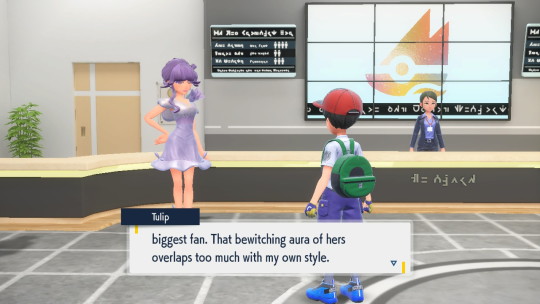
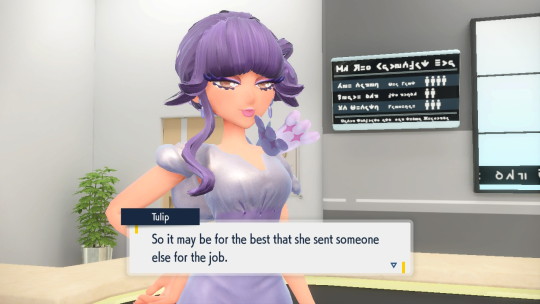
I guess it was a good thing she picked me to inspect these Gyms in her place.

I’m not THAT beautiful.
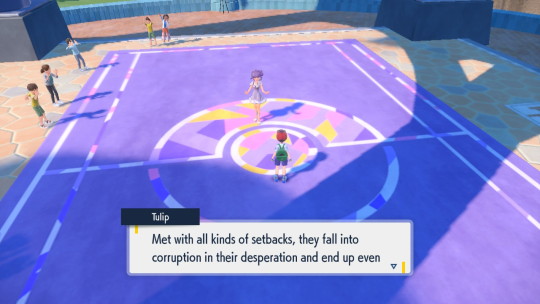

Why does this seem oddly connected to my life?
After I was finished with all of that, I moved on to the Montenevera Town Gym.

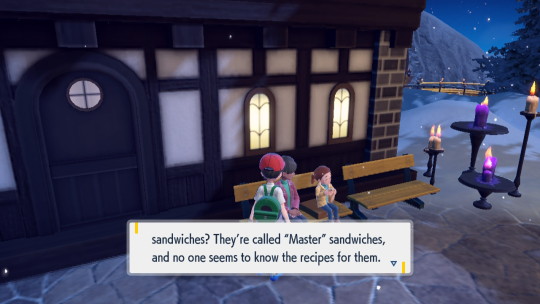
No one except me. (And a few other people...) These “Master” recipes are nice. But I know a few recipes that can provide even better powers.
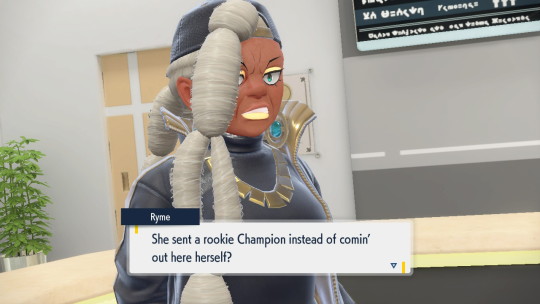
Who’s she calling a rookie? I’ll bring out my best Pokémon just for this match.

A queen on her stage...
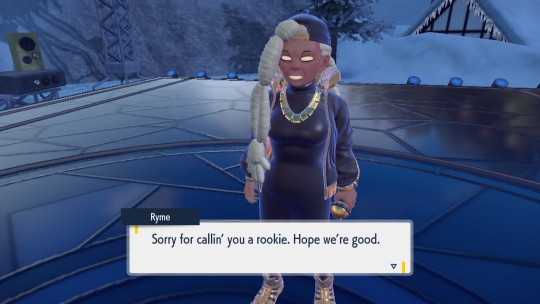
At least she knew what she said was wrong.
Before I scaled the mountain, I went to Area Zero to finish Miraidon’s training.
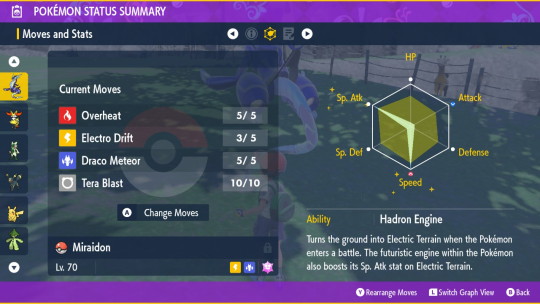
His Defense was only boosted by a small amount. But it should be good enough for him to stand a chance in battle!
Before I left Area Zero, I found these research papers that managed to catch my attention considering recent events.
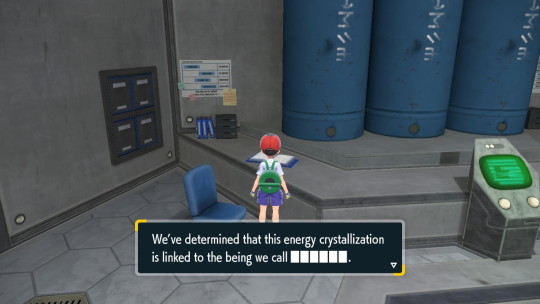

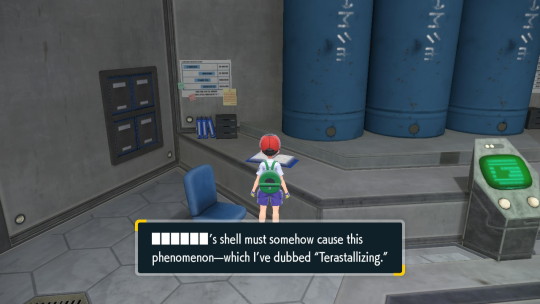
Even though the name is blanked out, and the number of characters in it doesn’t match up with its actual name, it’s pretty clear the Pokémon Turo was referring to is supposed to be Terapagos.

A shell made of interlocking hexagonal plates, what seemingly appears to be the properties of all known Pokémon types. Terapagos meets the professor’s description perfectly.
While there is the possibility Terapagos is the main source of Terastallization energy, I’m more intrigued by how early it was mentioned in these games. There’s a lot of mystery surrounding a Pokémon like this, and it was never officially unveiled to the public until a few months after the Scarlet and Violet versions were released as part of an upcoming update. Even though its data isn’t in the games yet, I imagine that if Terapagos were hiding in the files as this series’ super secret Pokémon (in a similar vein to Mew or the mythical Pokémon from the XY series), then it would’ve probably added more value to it. Give it a signature attack and ability that could make it a powerhouse on the battlefield, and you’ve got a highly memorable Pokémon!
In all honesty, I’m surprised Terapagos ISN’T a mythical Pokémon. It would’ve added so much to the lore and could’ve had the same impact as Mew or Jirachi. But considering the troubled development of these newer entries, I guess that wasn’t possible... But it’s still a fun thing to think about!
Alright, back to the blog post.
After I was finished with Miraidon, I went to the Glaseado Gym to fight Grusha.

Glad he got back into boarding.

And he’s also gotten more nicer towards people. A perfect growth in character!
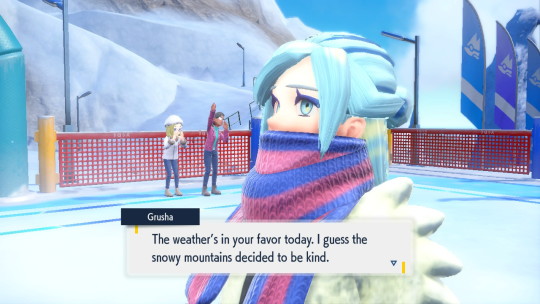
A thunderstorm came later on that day...
For this final part of the inspection, I thought I could have a little fun with it by taking on Grusha with only one Pokémon: Miraidon.

With Miraidon’s stats and abilities, he just might be able to win it. (I’m using this as practice for him.)
You can watch the match in the Paldea Web Stadium.
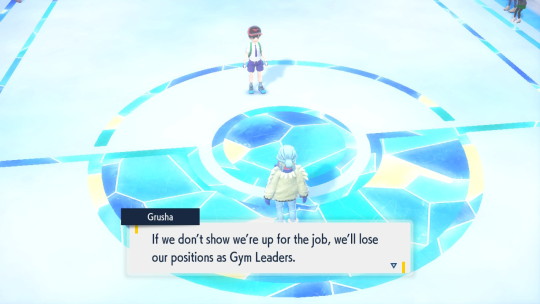
I think that’s already been established years ago.
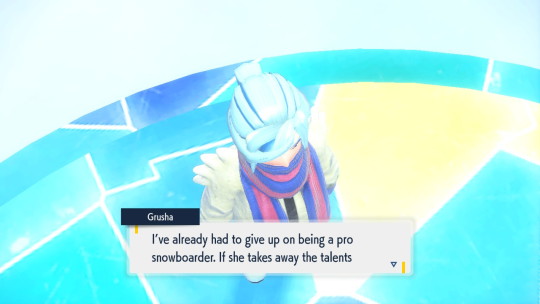

You’ve still got your personality. Besides, it’s not like you can stop being a Trainer or choose to focus on one sport for the rest of your life.

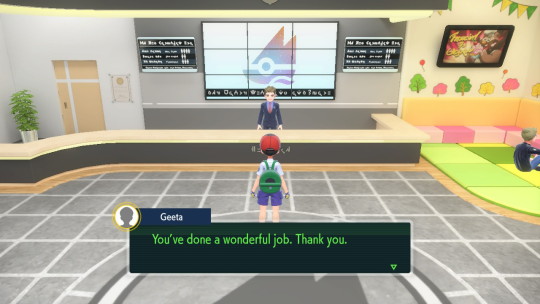
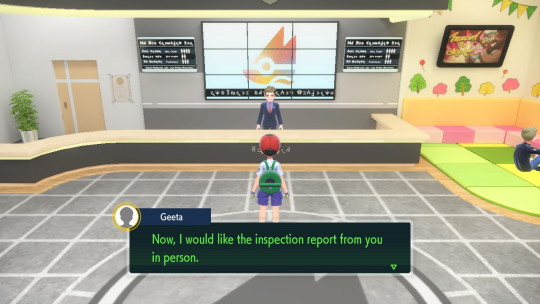
And that takes care of that. That tournament is as good as mine! Now I just have to head back to the academy. (...If nothing else gets in my way, that is...)
Of course, I had to reward my Pokémon with some food.
For this dish, I tried using as many spicy ingredients as possible.

And I’ll add a dash of this Spicy Herba Mystica to complete the recipe.

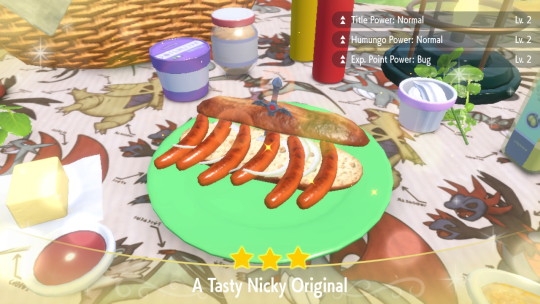
It’s not much. But it’s still a good start when it comes to sandwich recipes!
That should do it for now. Next time, I’ll take on the Academy Ace Tournament and win some more ribbons for my Pokémon.
#pokémon#Pokemon Violet#Braixen#Kalos#Miraidon#Paldea#Legendary Pokemon#Terapagos#Tulip#Ryme#Grusha#screenshots#Nintendo Switch#nintendo#Game Freak#Creatures Inc.
11 notes
·
View notes
Note
hiiii mel <3 i’m.. thinking of starting to write for nct.. mostly jaemin.. and i more or less have an idea for formatting but it’s been a really long time since i’ve had to do graphics for fic’s (like the banner and stuff!) and i was wondering if you had any tips for that? like where to find good pictures (solid backgrounds seem like the best choice for not clashing with the lettering, a problem i ran into unfortunately…) and also is there any particular place you get your fonts from? if you aren’t comfortable answering that (or any of this!) then that’s totally ok and feel free to just give general advice or ignore this completely :]
now i leave you with renjun… https://www.instagram.com/reel/C117-m9JGuo/?igsh=aXI1YmZ6M2YycHg1
hiii! under the cut!
so you've already got a good idea with using solid backgrounds for fic headers to make it easier for the text to show up! i source pretty much all my images from the groups/idols' official social medias. i just caution you not to take screenshots of say, instagram uploads, because this will degrade the quality of the image. either download it from twitter or wherehaveyou, or from an updates account like neocatharsis or wayvment here on tumblr! another word of caution: DO NOT DOWNLOAD TEASER IMAGES/PHOTOSHOOT IMAGES FROM CONTENT CREATORS WHO MAKE EDITS TO THE IMAGES, SUCH AS CHANGING THE COLORS, UN-WHITEWASHING, ETC., WITHOUT THEIR PERMISSION. THAT IS THEFT FROM OTHER FANS. updates accounts like neocatharsis and wayvment simply reupload the original images posted by the entertainment company/idol in the exact same form without making changes to them. editors make alterations to the image and that new image is their own creative work, separate from the original one posted. you need the editor's explicit permission in order to use their edited version as a fic header.
i do all of my editing on my phone for my fics (except for the thin section dividers that i use, which i make in pirated photoshop cs6 so i can get specific dimensions, 540x2 pixels, and make the gradients super quick in a way that i know how to do. there may be a super easy way to do this w an app on ur phone too, that's just how i know how to)
anyway, if i have a photo that i really like, that i just knowwwww matches with the image of the guy in the fic in my head or smth, that i just rlly want to use but has a busier background, sometimes i'll use the portrait editing settings on my phone to blur the background a little bit and that makes the text a lot more legible (i have a samsung but im 99% sure iphones can do this too)
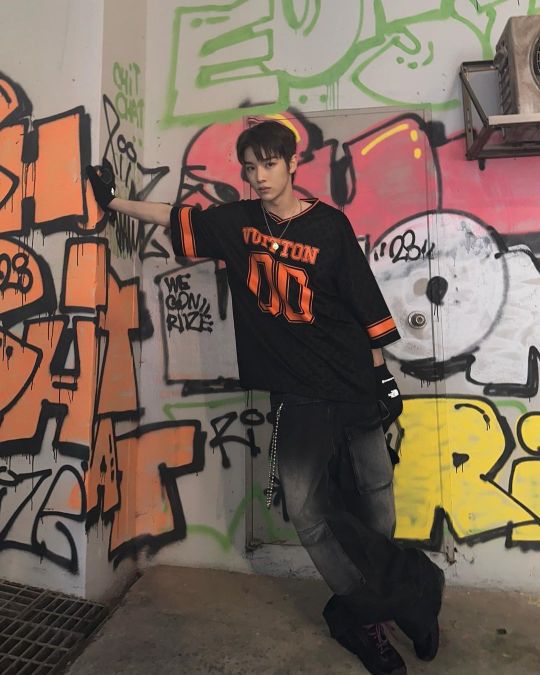
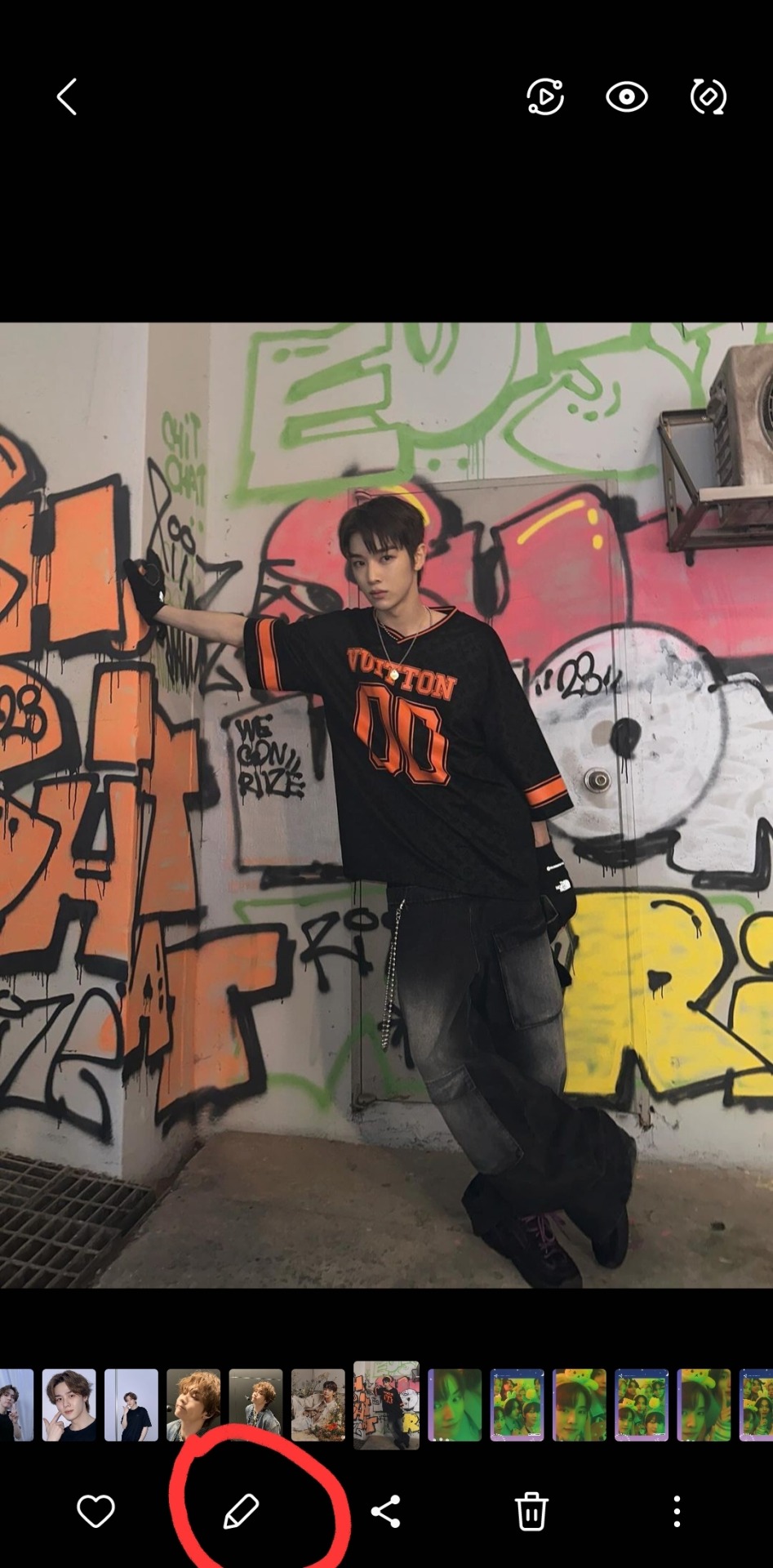
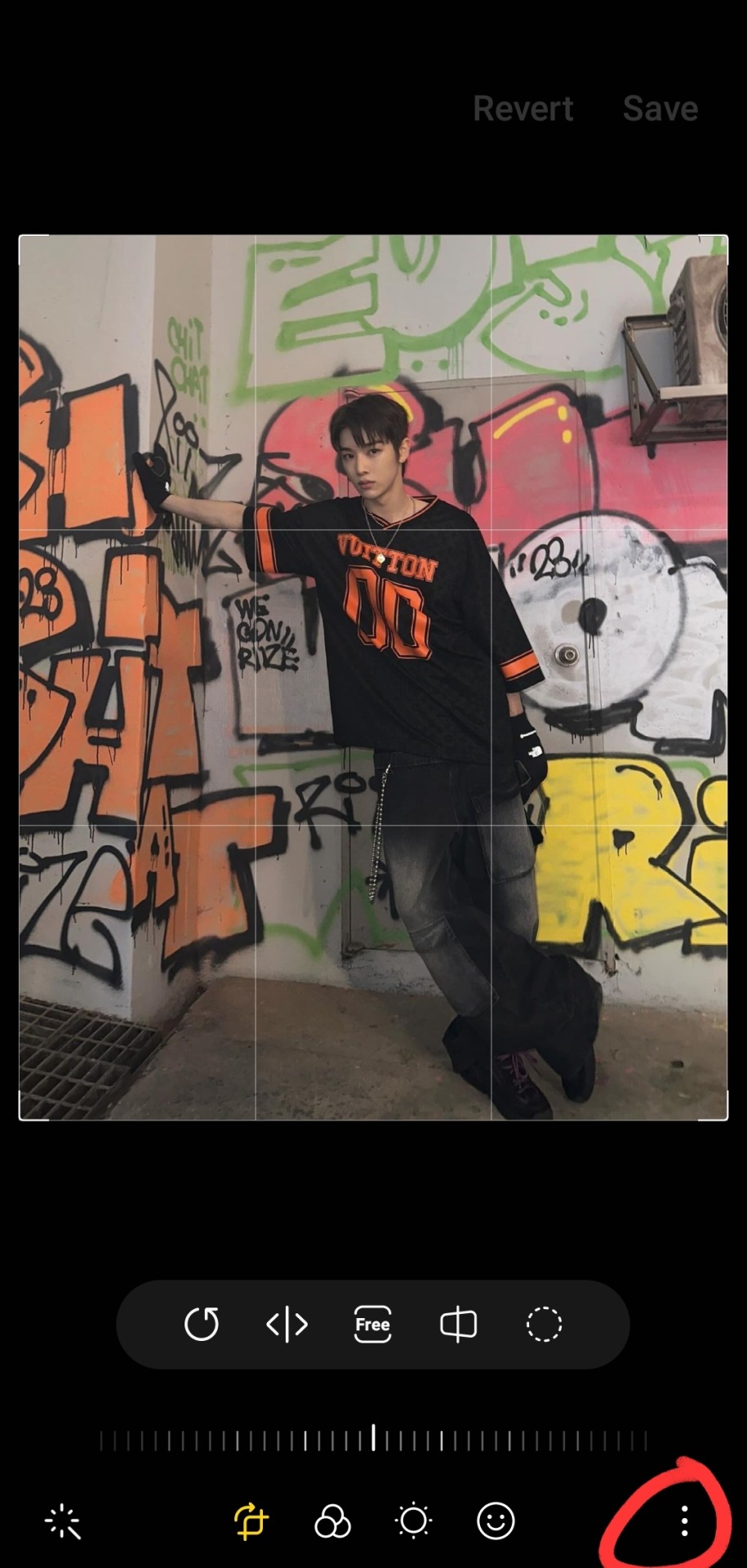
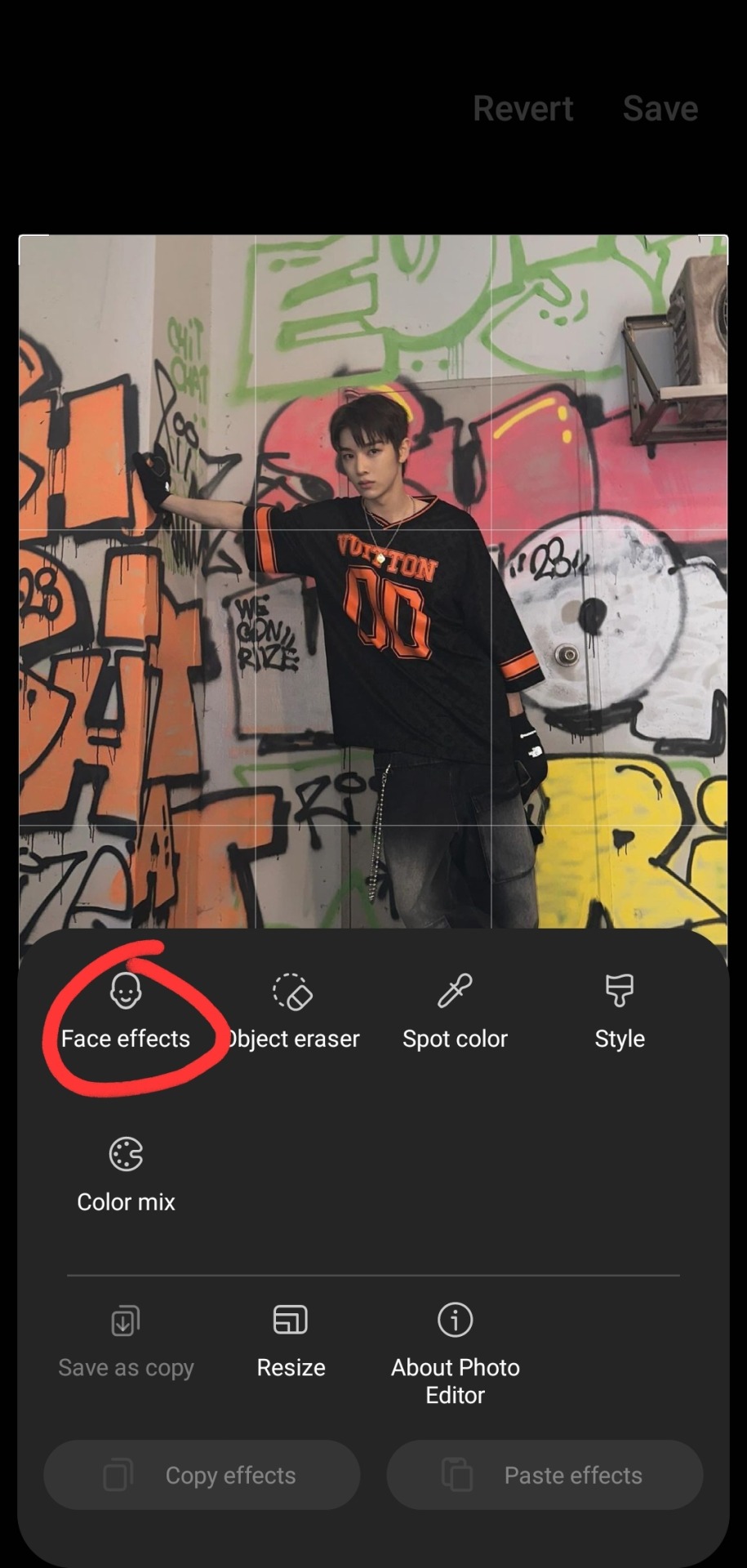
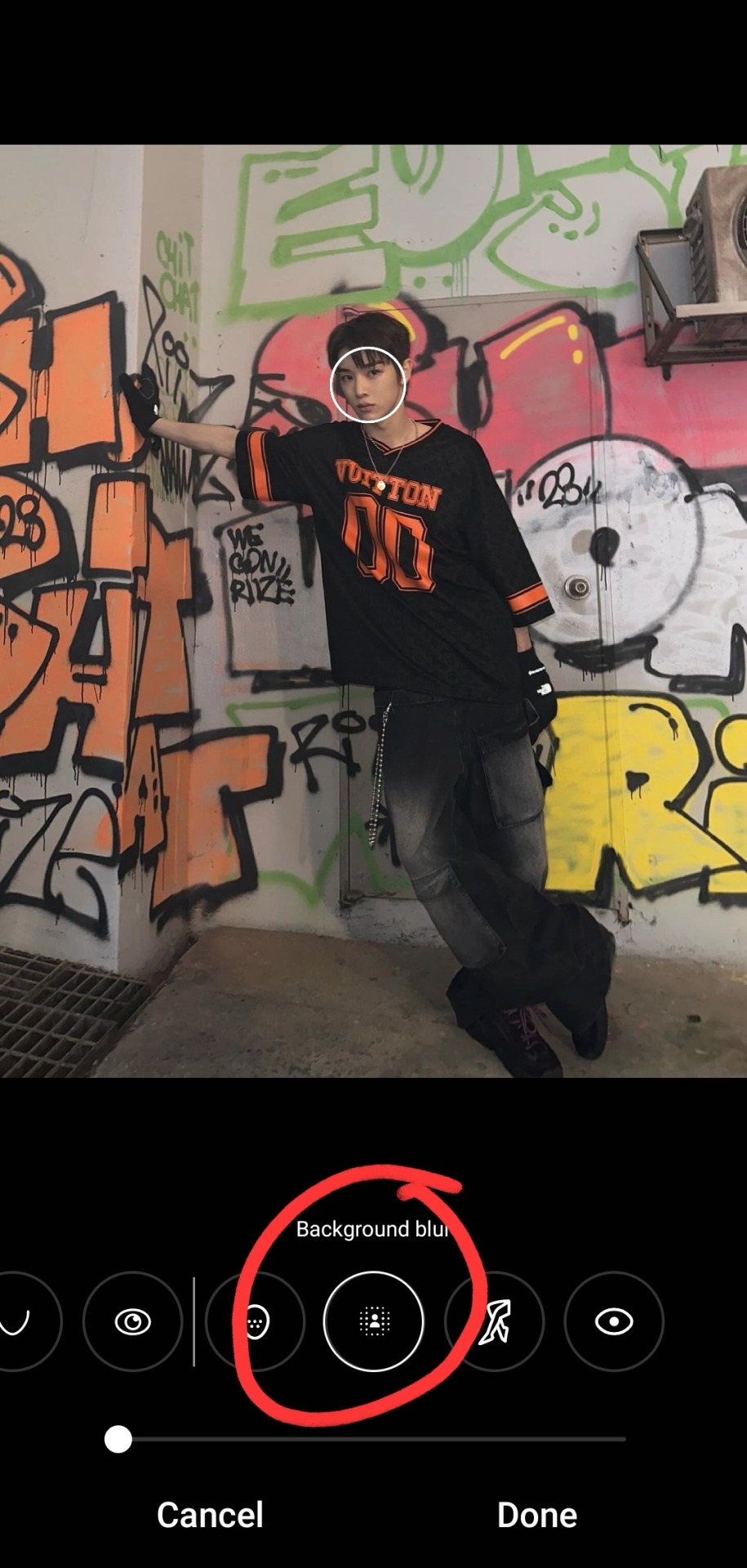
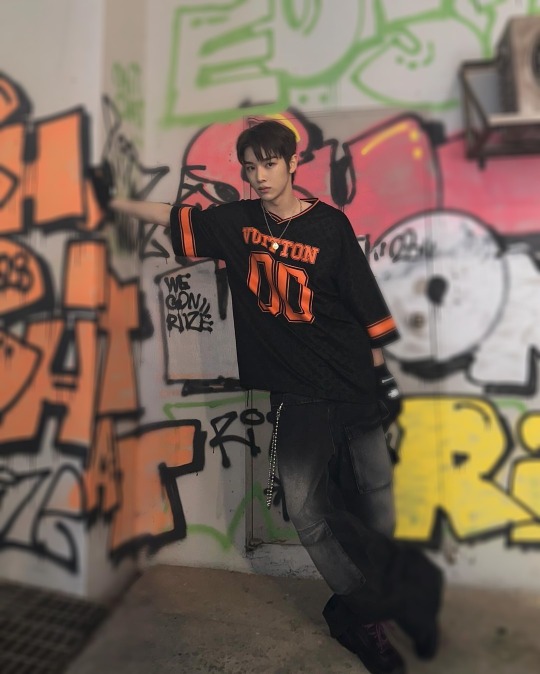
i typically don't bump it past 1 or 2, or the edges of the blur start looking a bit harsh, and i find that i don't really need more than this for the text to pop against the background anyway!
as for putting the text on the photos, i've the used the app phonto for years! it's completely free, doesn't put any watermark on your photos, comes with a bunch of fonts pre-installed, isn't super ad-heavy (it has a rlly small banner ad all the time at the top, and only shows u a skippable 10s ad when u save a finished photo), and you can download fonts from the internet to install straight into the app!

my favorite free font website is dafont.com, i literally will spend hours just browsing on there looking at fonts to download lmao. anyway here's how i find fonts for stuff and download, install, and use them with dafont and phonto:
once you have phonto downloaded, open dafont.com
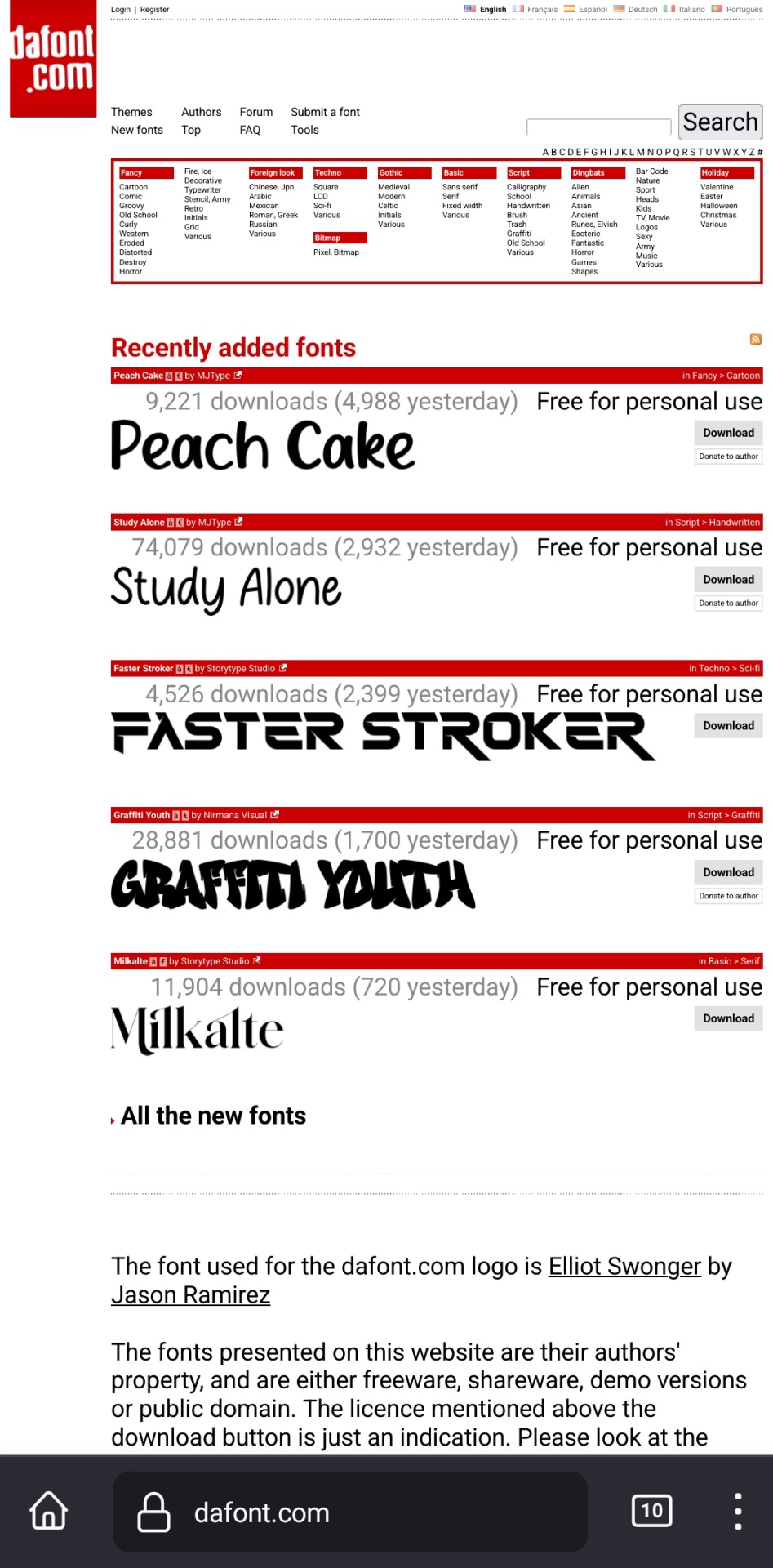
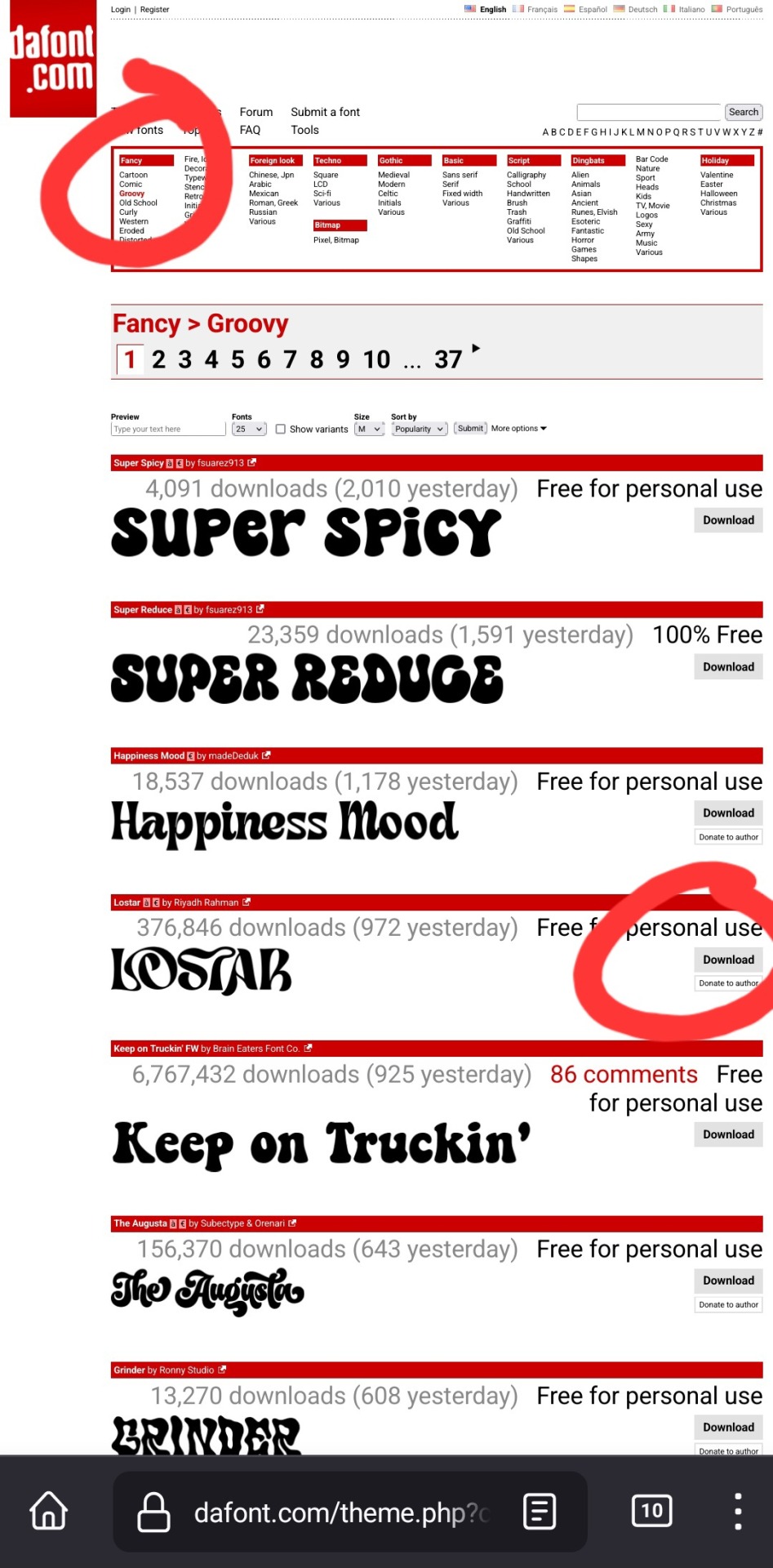
up at the top, it has a bunch of different categories of fonts. for this example, i chose fancy > groovy, and then on this first page, i liked this font called "lostar" (there's also a search bar up there, but it only searches font names, not kinds of fonts, so if you're looking for a groovy-feeling font and you searched "groovy," only fonts with the word "groovy" in the name would come up)
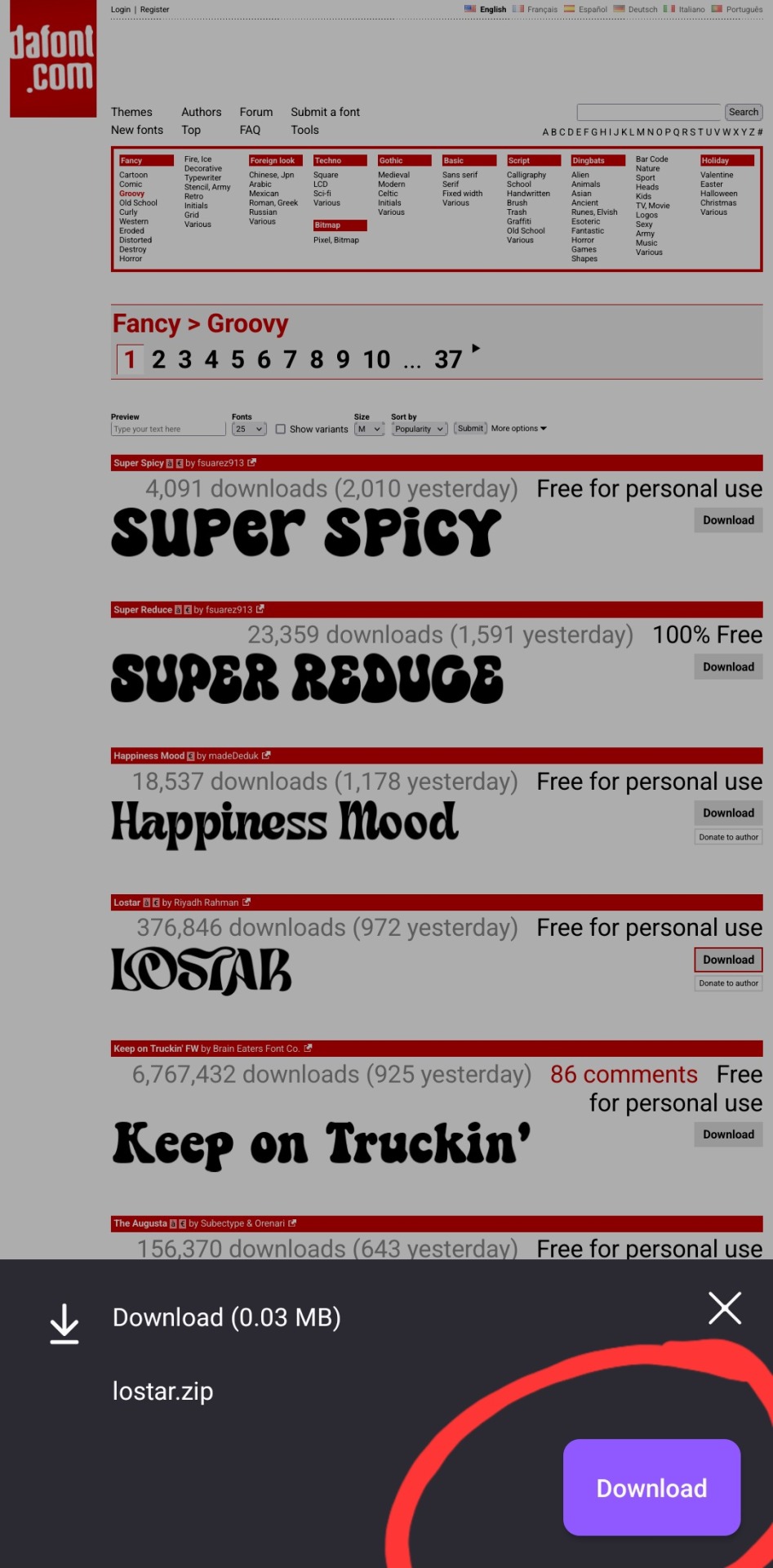
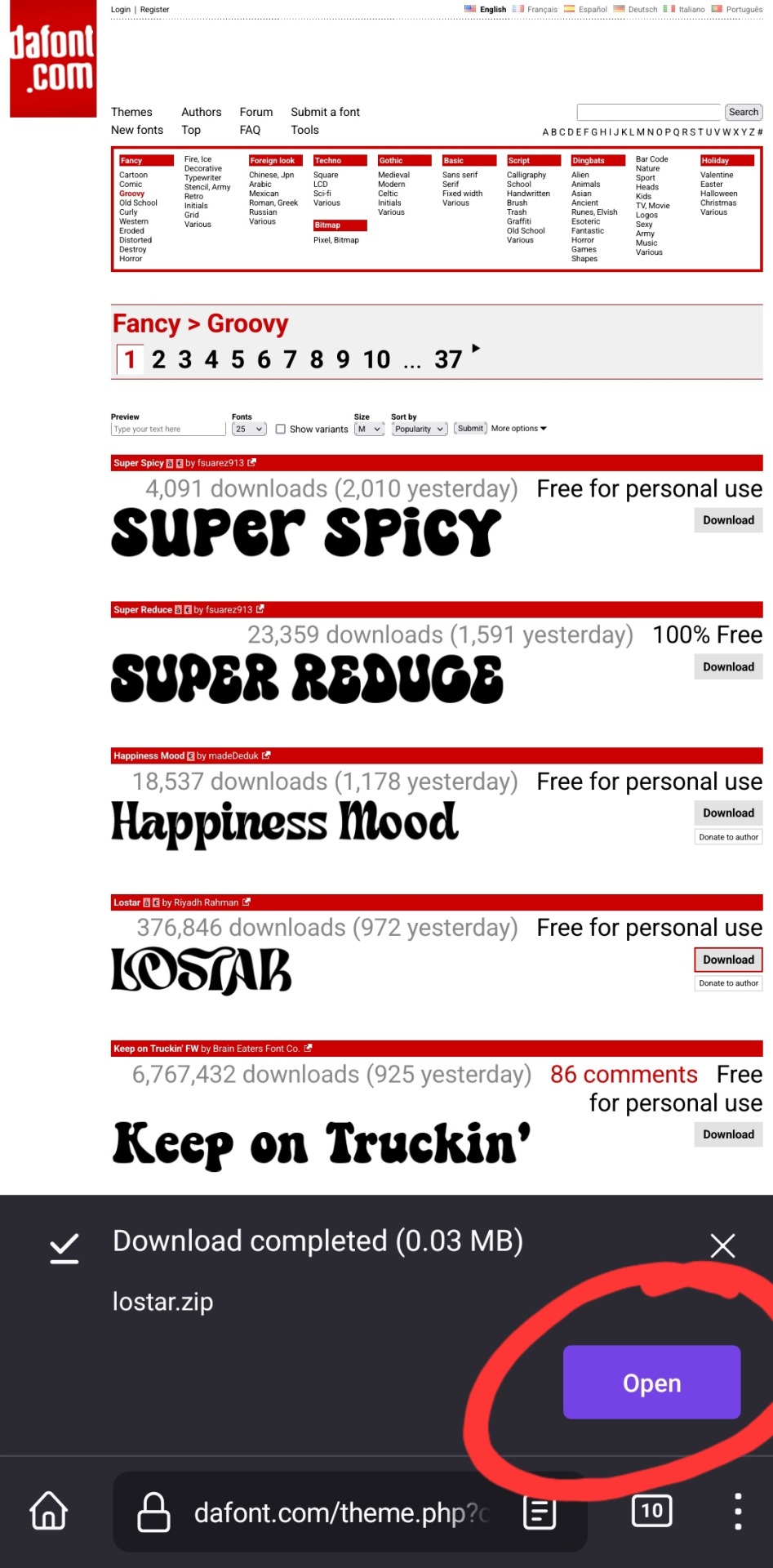
i then press download, and open in my browser (i use firefox btw, which is why it looks like this lol). make sure you're opening the .zip file with the phonto app (it opens directly into into phonto on my phone, you may have to choose to open the .zip file using the phonto app from several options, instead of your phone's file explorer or some other app on your phone)
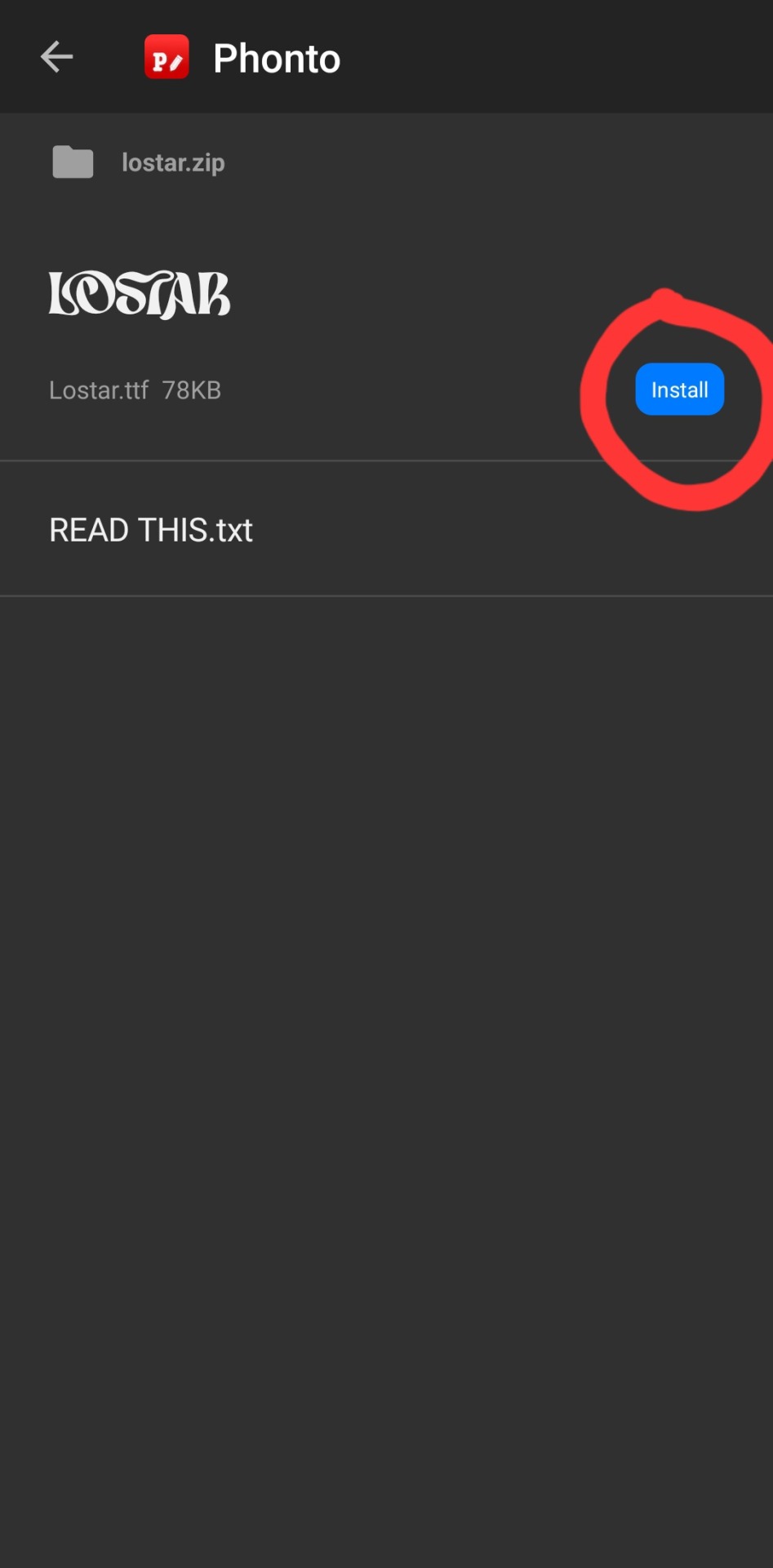
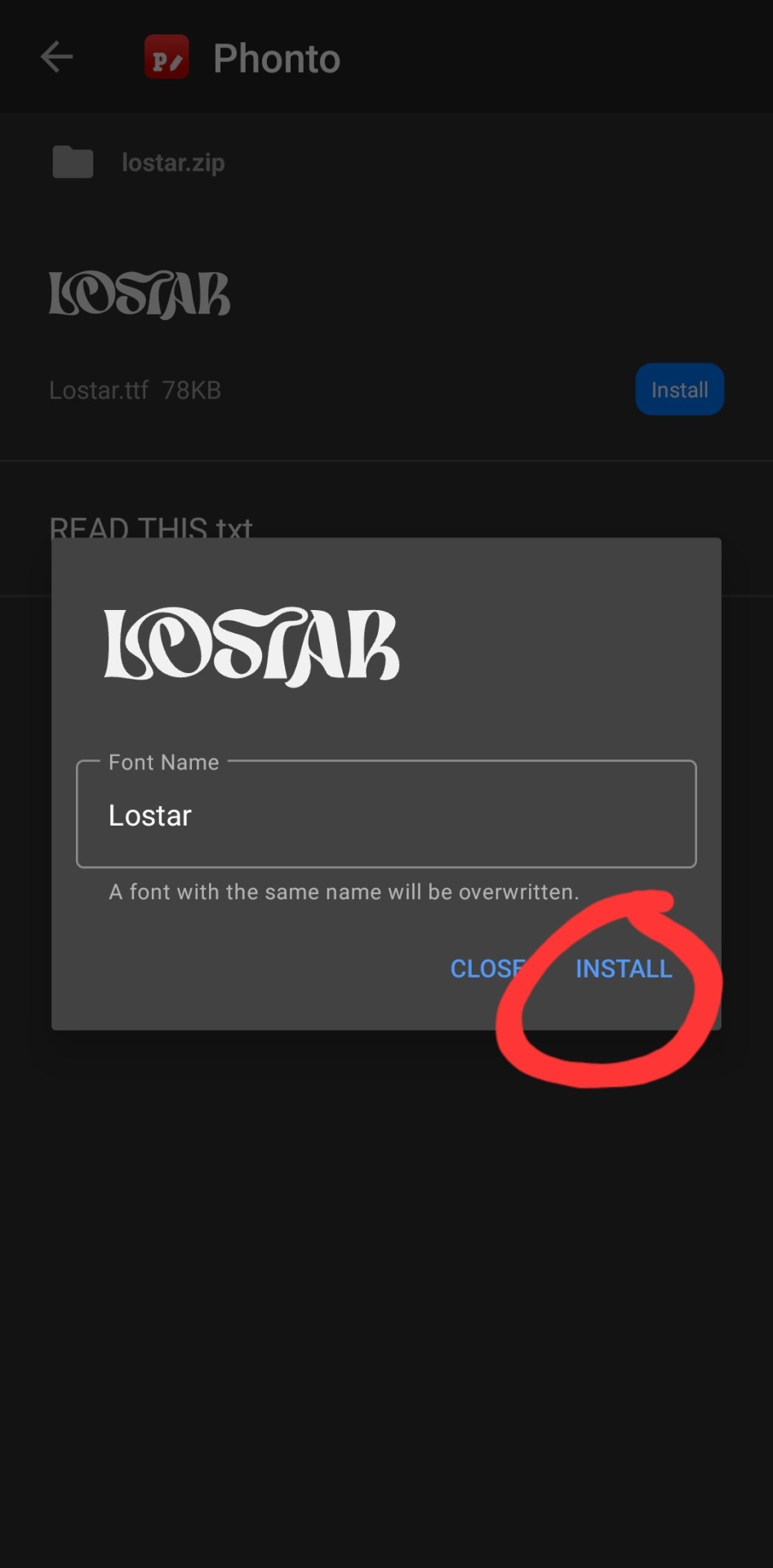
in the phonto app, you have to click install, then install again (it gives you the option to rename it, but i just keep the original font name bc why would you rename it?).
that READ THIS.txt file is a message from the font maker, it's the personal use license for the font (most of the fonts on dafont.com are free for personal use ONLY, and these .txt files that are contained in the .zip files are notes from the font makers telling u what u can and can't use the fonts for. generally, as long as ur not a business, u should be good this is not legal advice, please read them. also there's usually little thank you notes from the font makers in here as well!)
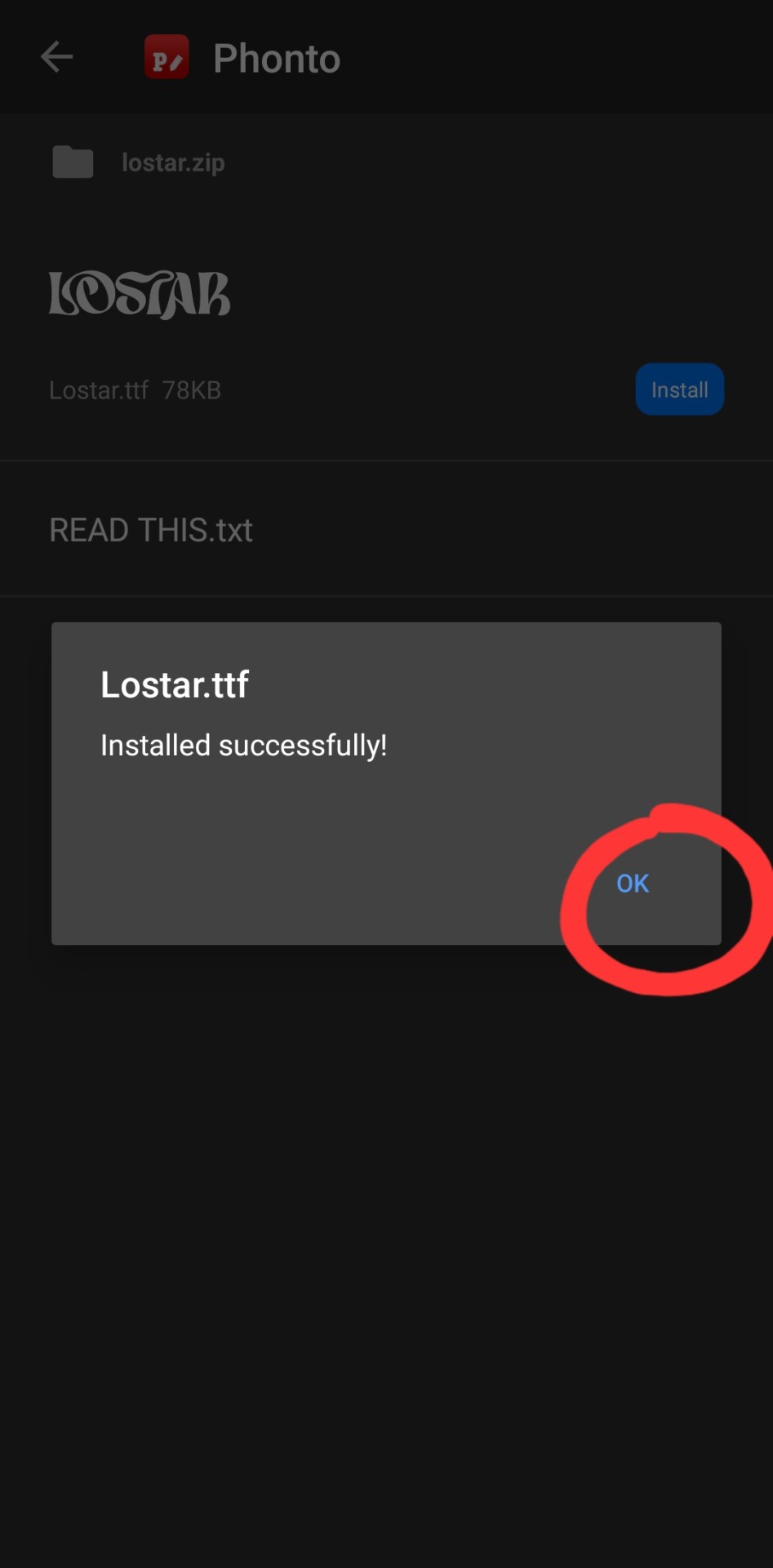
click ok.

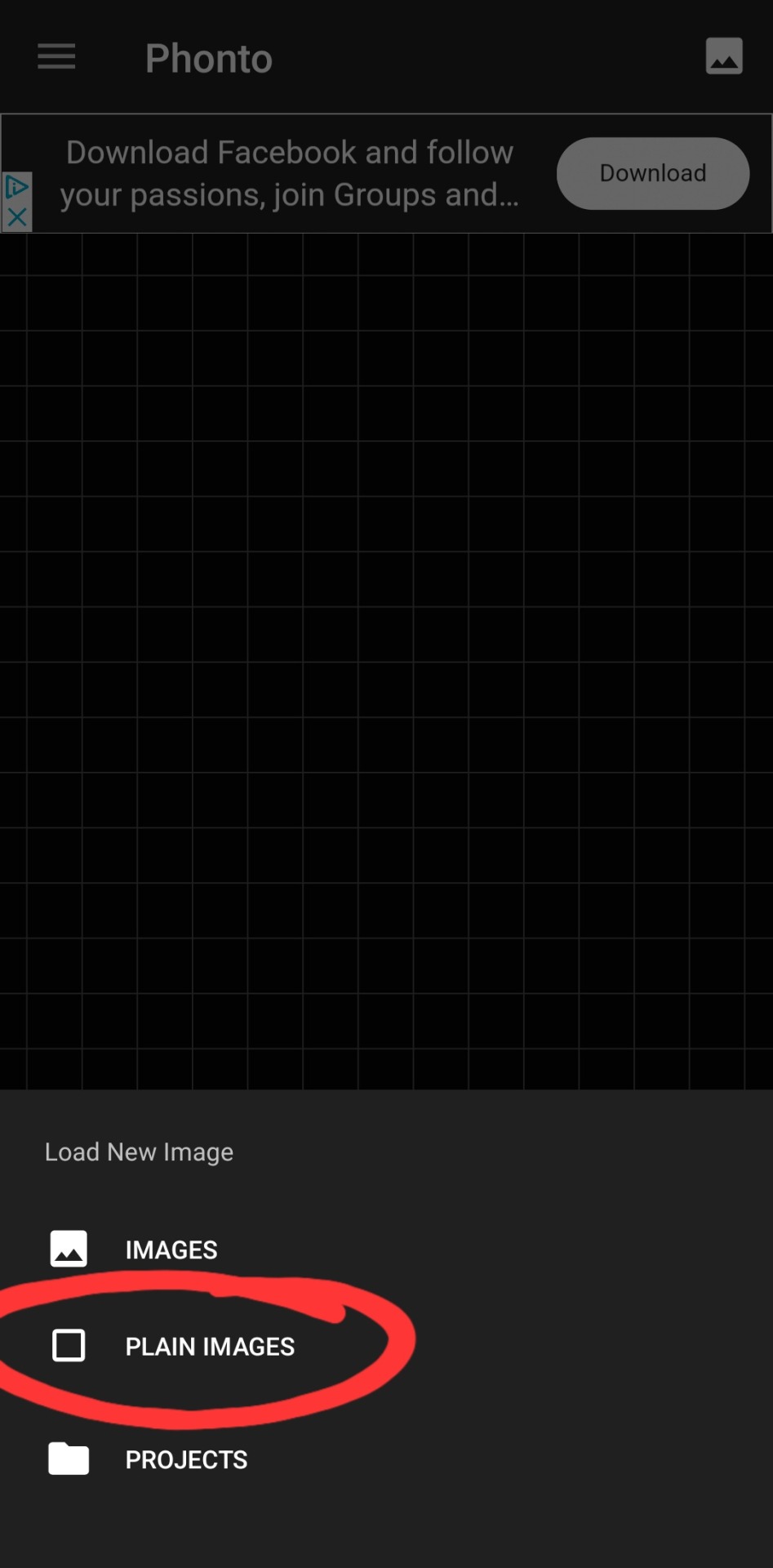
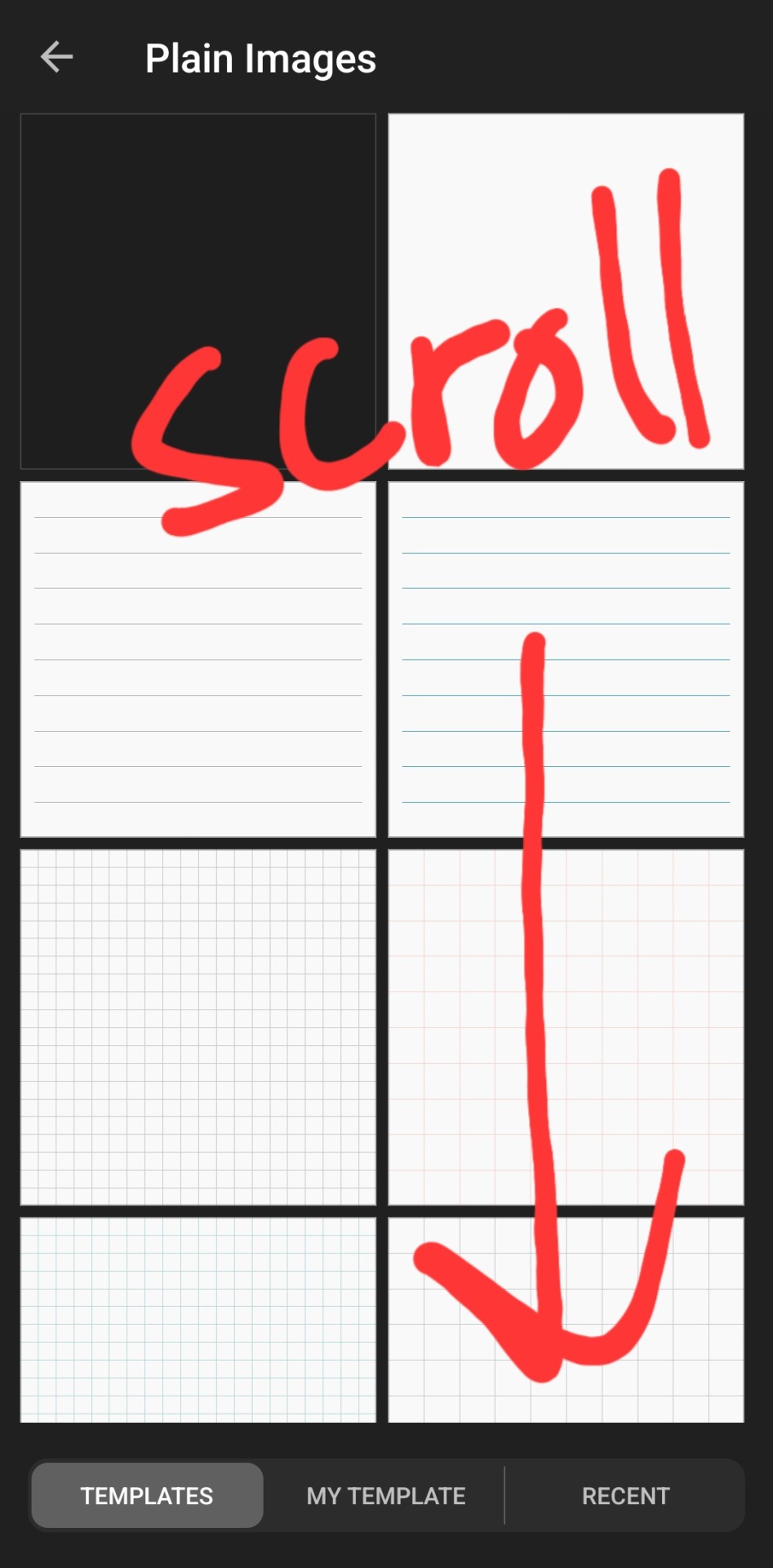
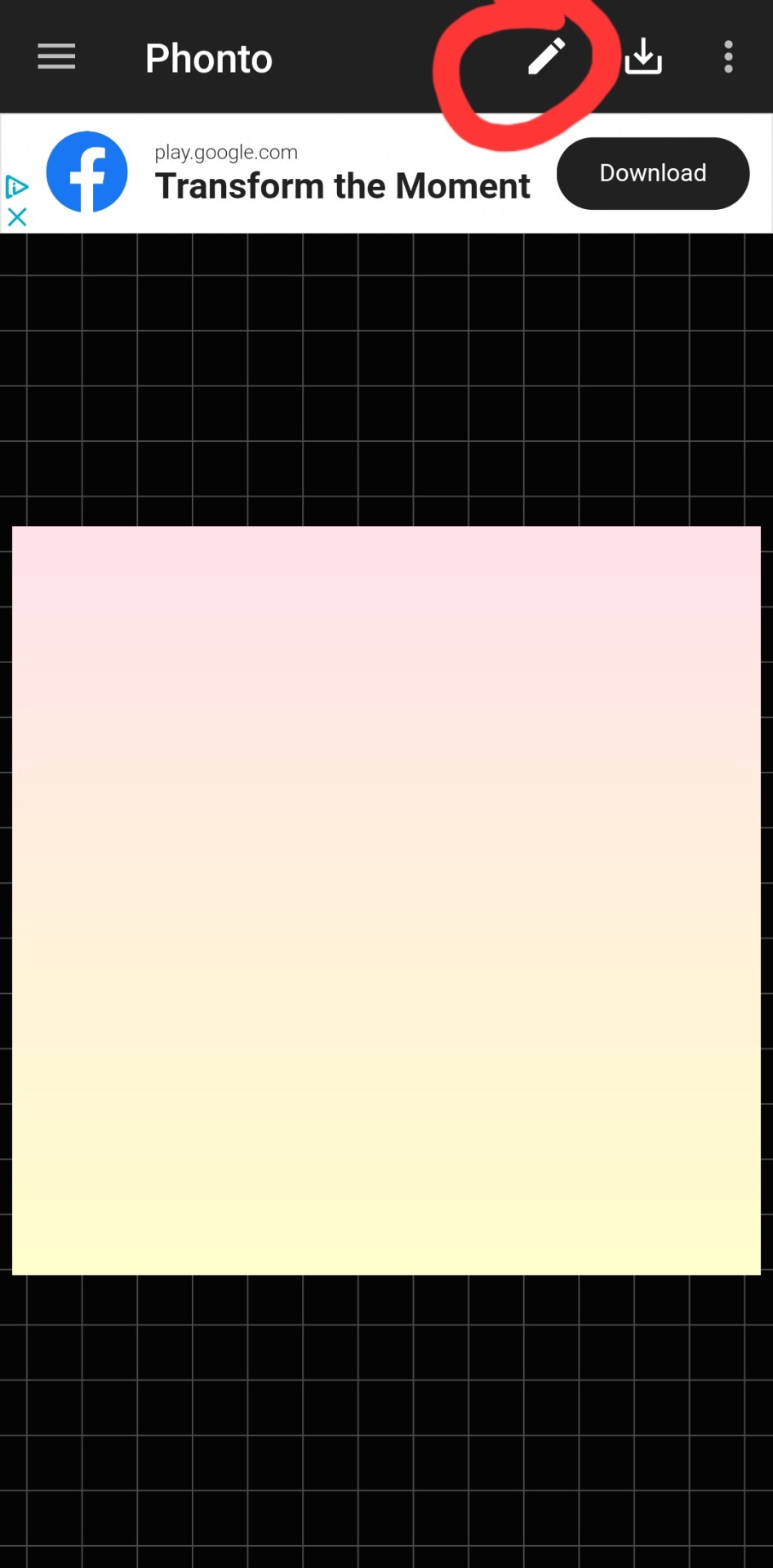
then you've got to slap some text on an image. you can choose an image from your camera roll, use one of their plain images, or open a pre-saved work-in-progress. for this example i used one of their premade gradients to make it easy
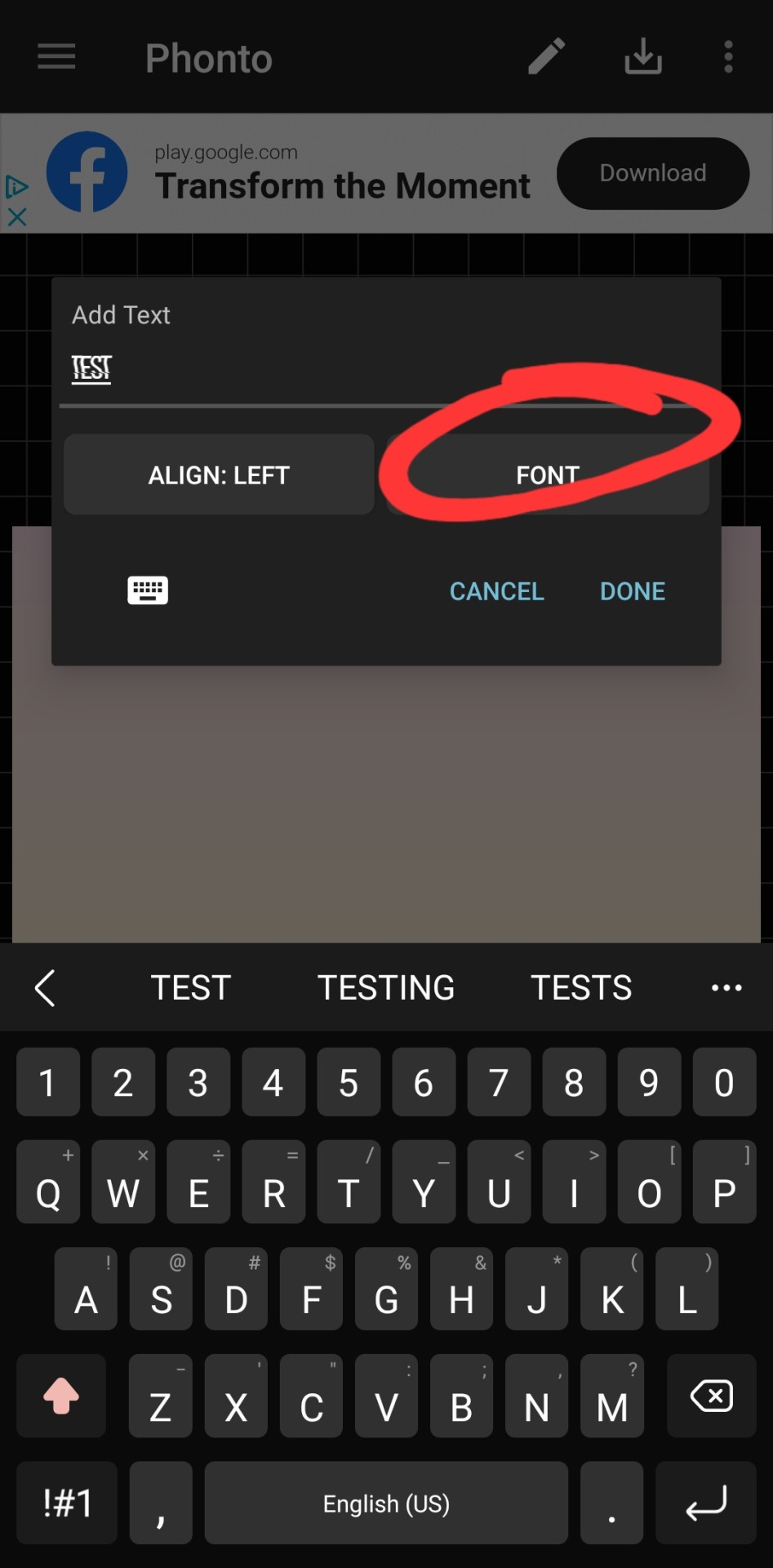
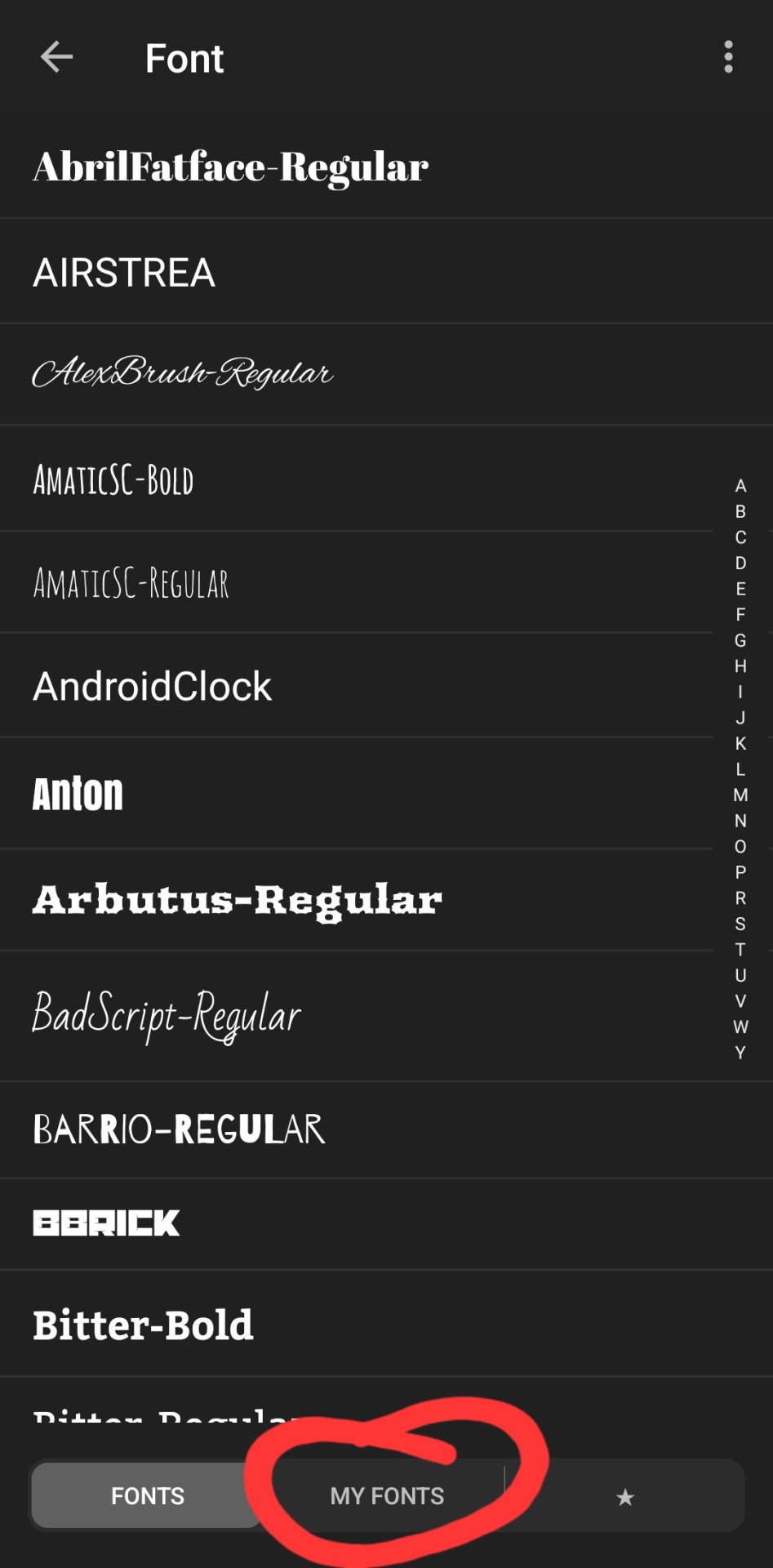
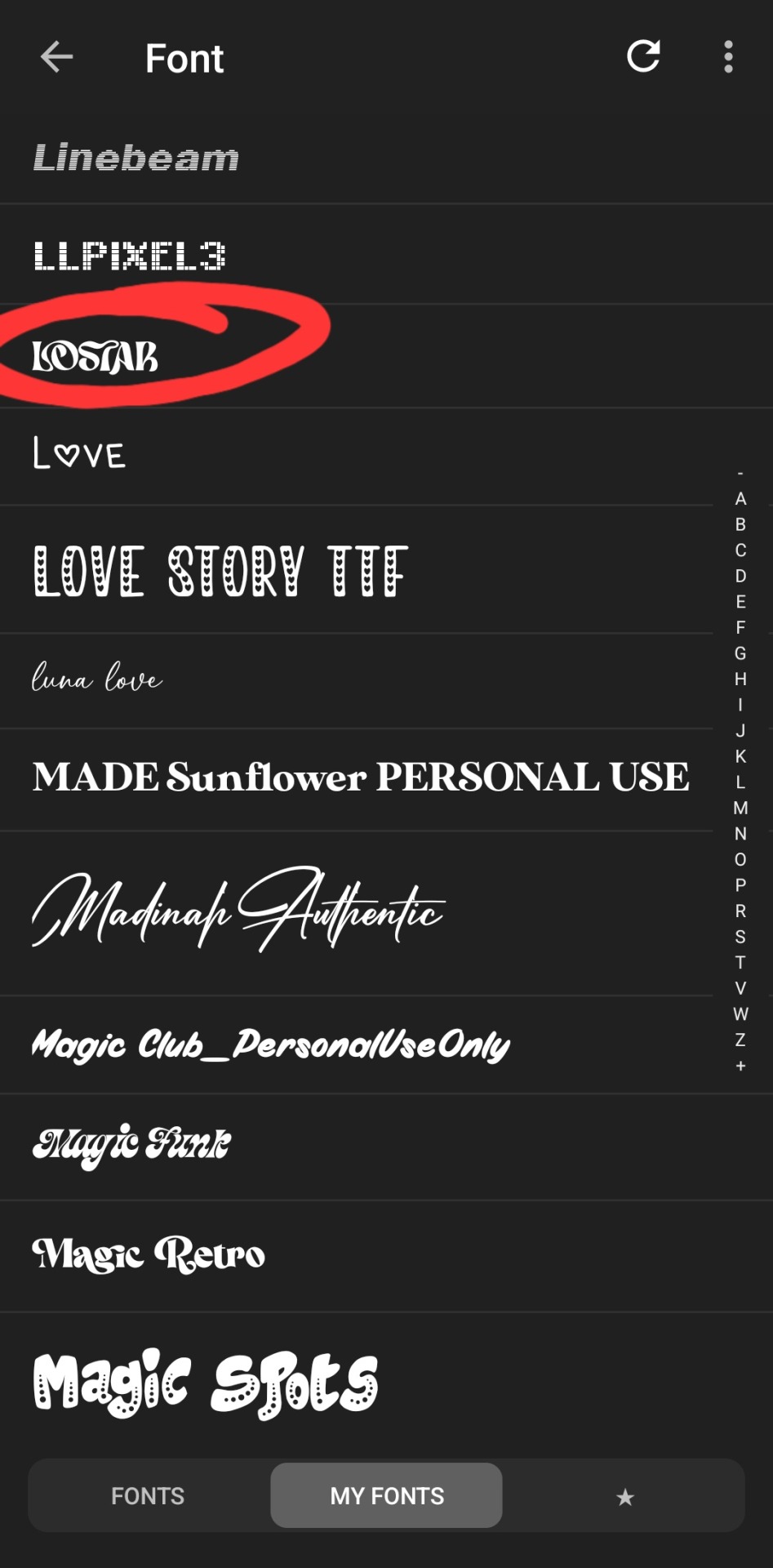
type whatever it is you want, click font. the left tab is the pre-installed fonts, the middle tab is the fonts that you've downloaded from elsewhere. here's the lostar we just got!
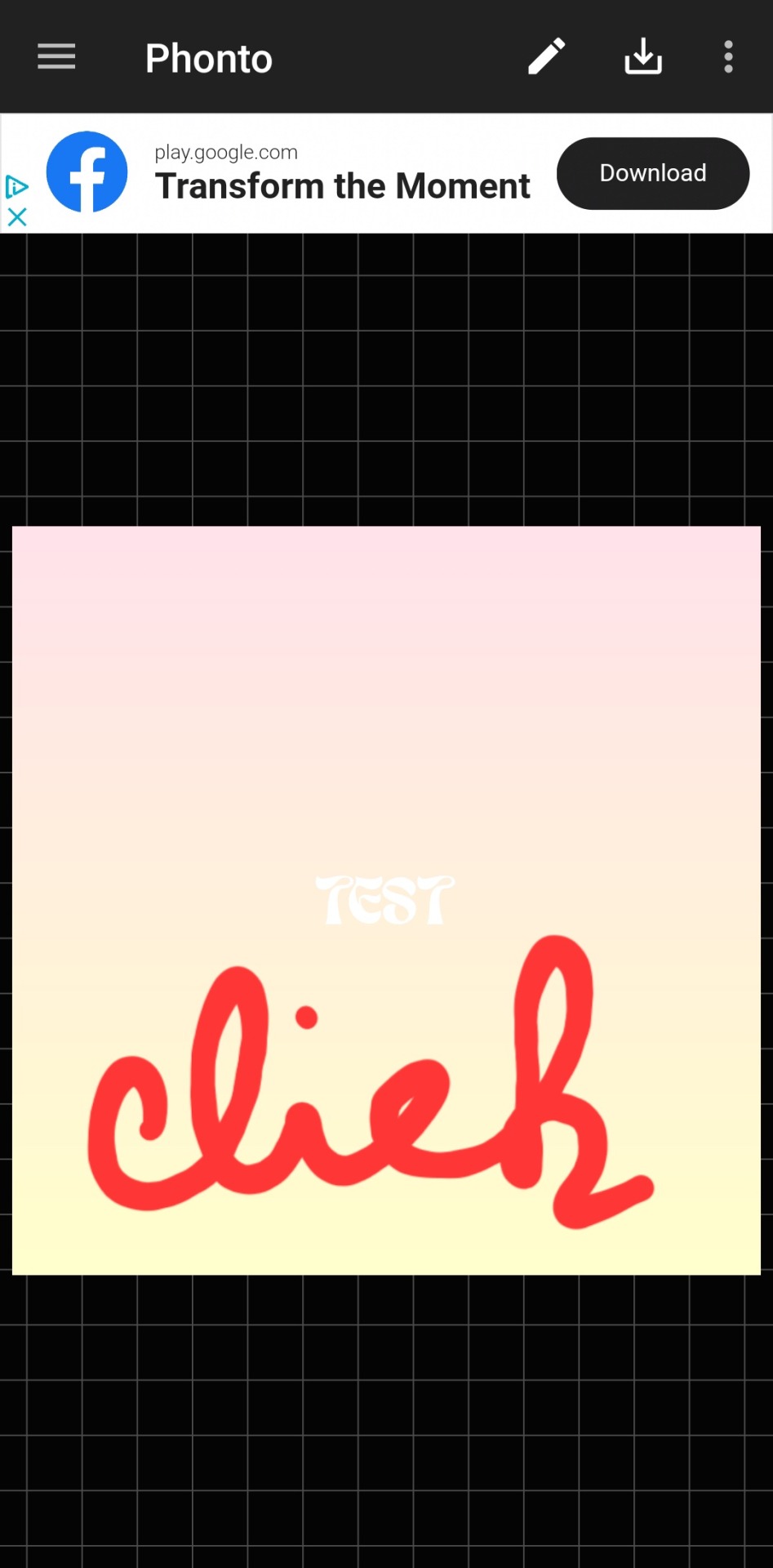
oh can't see it.
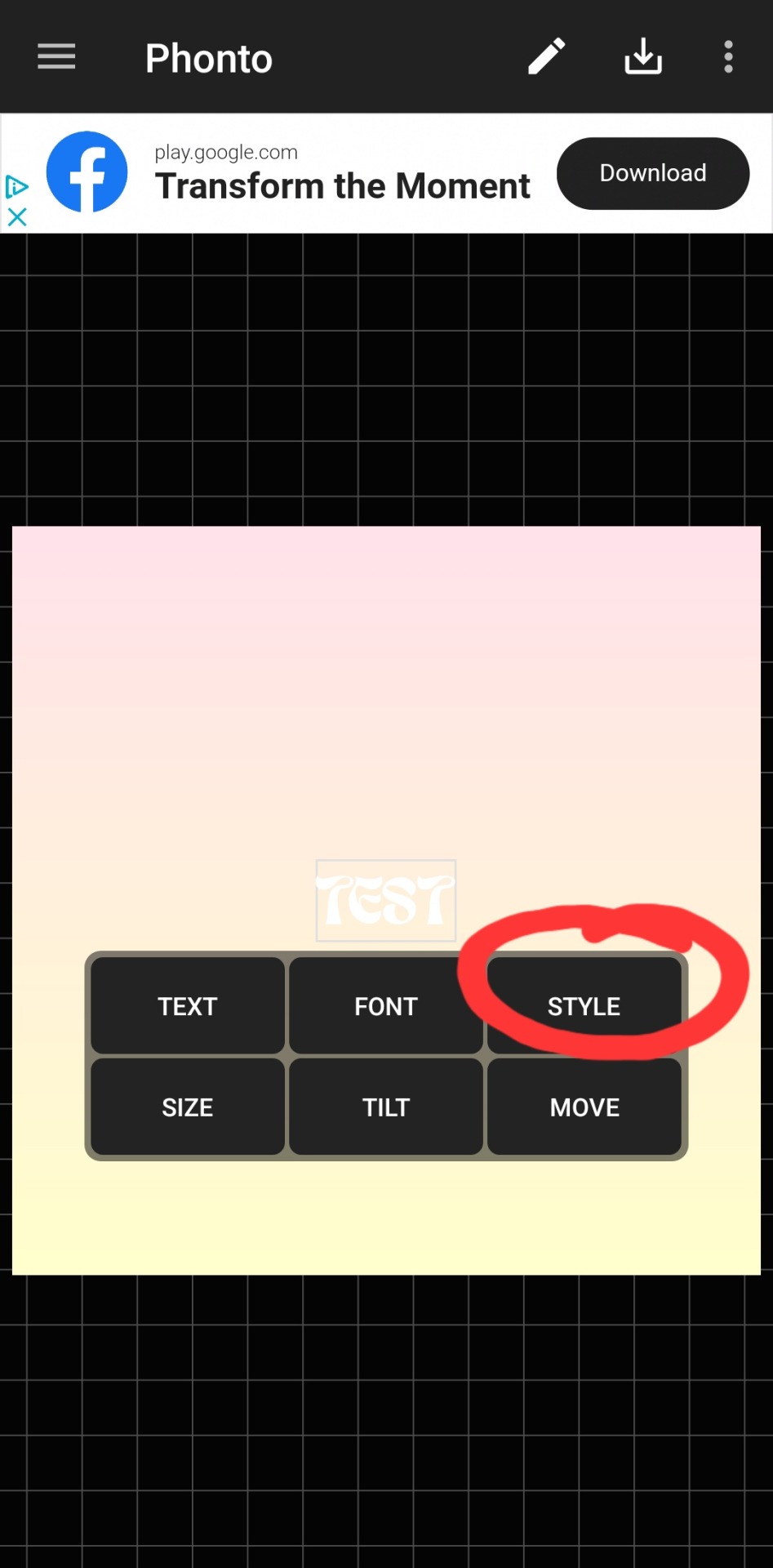
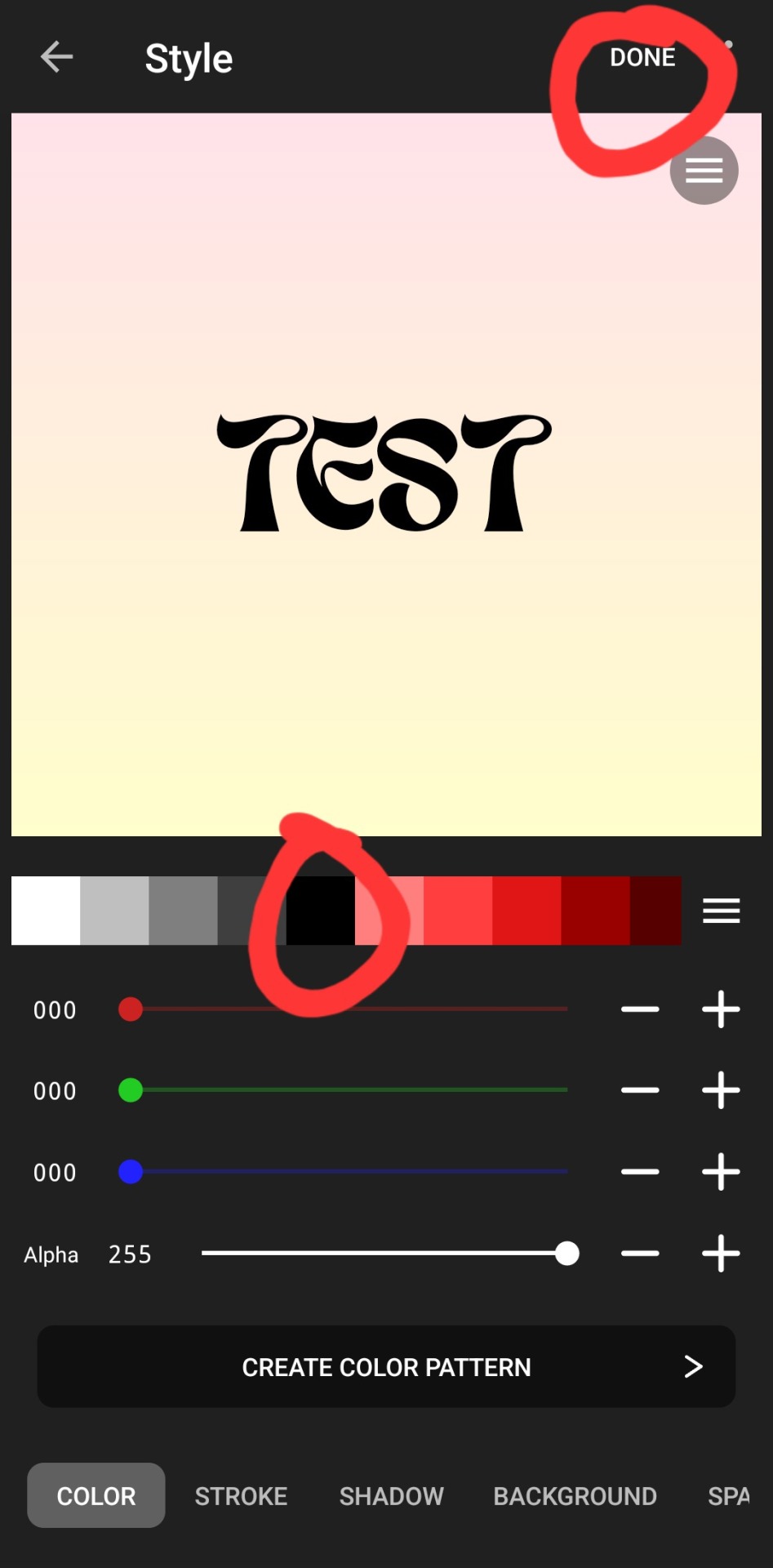
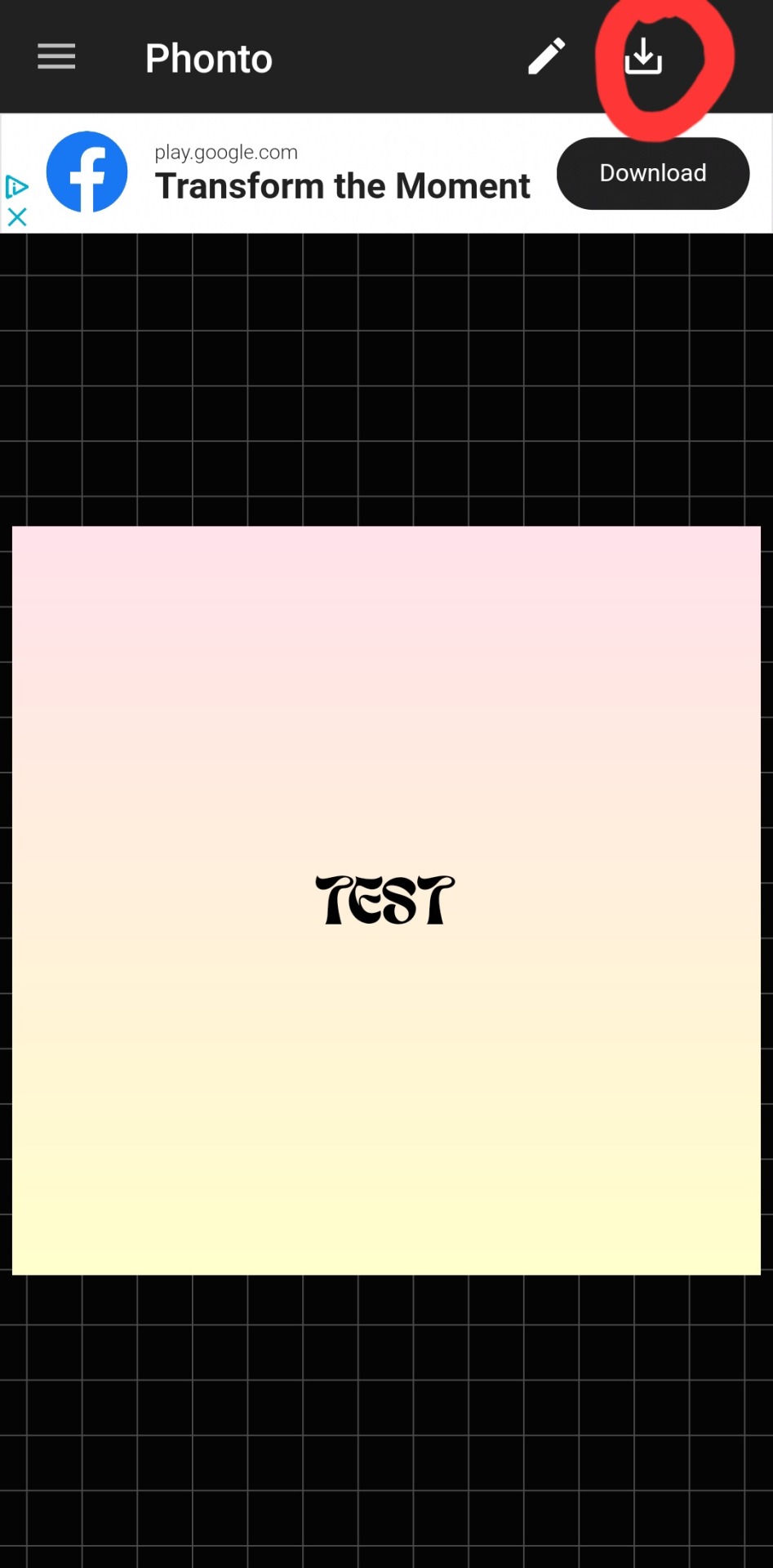
there we go! how fun! i'll probably use this in a fic header in the future. download button in the top right.
#hope this was helpful!#i don't mind sharing this stuff#i didn't invent fic headers or dividers or literally any of this lmao#answered#anonymous#talk#text#mine#writing tag#i suppose.....since its about my fics.........sorta...idk dude#also the renjun cheekies 😭😭 thank youuuu
3 notes
·
View notes
Text
GhostBusters Spirits Unleashed Ecto Edition Review (Nintendo Switch OLED)
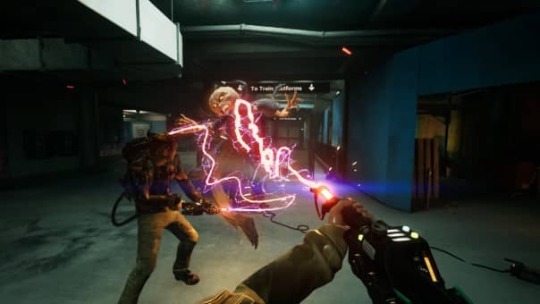
For this GhostBusters Spirits Unleashed Ecto Edition Review, we play with all the iconic gear and gadgets, from Proton Packs to PKE Meters and Ghost Traps, that fans would expect and new gamers to the universe will enjoy when playing as a Ghostbuster. Ghosts have multiple abilities in their arsenal, like possessing objects, of course, sliming, and more, that make haunting all the various locations a blast to play. In addition, many will recognize the Firehouse and Ray’s Occult Books that act as the game’s hub.
GhostBusters Spirits Unleashed Ecto Edition Review Pros:
- Decent graphics. - 4.4GB Download size. - Action 4 v 1 gameplay. - Opening optional training area. (replayable) - Full single-player support against the Ai. - Officially licensed game. - The Firehouse and Ray's Occult shop is your hub where you can soak in the atmosphere, talk with the guys, take on jobs, and side hustles, and customize yourself. - Character customization options - Body (physique, face, and hairstyle), outfits (name tag, tops, shirt logo, shirt patch 1 and 2, bottoms, and full outfit), accessories (headwear, eyewear, elbow pads, gloves, knee pads, and footwear). - Gear customization - particle thrower, proton pack, PKE meter, and the ghost trap. - Unlock new upgrades and parts for your gear to affect their stats and general usage. - Earn EXP and level up to get new outfits and gear unlocks. - The collectible fungus can be found in levels for Rewards and exp. - You lose money for damaging property. - Civilians will run around scared of ghosts or your behavior. - You can calm civilians down by completing a mini-game. - Secondary Gadgets can be unlocked and equipped - VAD, ionizer pods, radar Puck, belt gizmo, disruptor pylon, and Ecto goggles. - You can indeed slide down the pole in the firehouse. - Little trinkets and Easter eggs lying around the firehouse. - Unlock new side hustle missions as you level up. - Research contracts add more experience and rewards to a job. - Has the iconic theme tune. - Excellent voice work. - Ten locations to play in - New Motion Club, S C Y County Courthouse, Moros Medical Facility, RMS Artemisa, Clock Tower Brewery and pub, Rock Island Prison, Hudson Canyon Lodge, Petey’s Pirate Cove, Galway Station, and Whitestone Museum. - You get an opening and closing cutscene of your team. - Does include uniforms and tech from the the real Ghostbusters cartoon. - Has the latest update adding new locations, More narrative, and Tobin pages along with Halloween events and cardboard shells for your gear. - A lot of visual feedback on your performance from calming civilians to picking up fungus or busting ghosts. - Your AI team will ping ghosts and locations. - Pings show locations. - A lot of fun even solo. - Gets addictive. - If you level up during a job it bangs up saying it and shows any unlocks. - End of job breakdown. - You can play as a ghost and get a full training match. - Ghosts (including you) can inhabit objects. - As a ghost you can slime up the place, slime people, use abilities, see through walls, find rifts (your spawn point) and hide it or move it, sabotage Ghostbusters kit, haunt and possess items, and more. - When possessing an item you can jump from one to the other. - Pke is the source of ghosts and this goes down when using abilities but also regents slowly over time. - The goal of the Ghostbusters is to clear out all ghosts and destroy all rifts, the ghost's goal is to fill that haunted meter up to 100 percent. - Ghosts can escape a tether and even the ghost trap if they line up in the direction and mash the correct button. - Put new shells over the top of your gear to completely change their appearance. - Ghosts and Ghostbusters are the same rank so any exp earned from any goes towards unlocks. - Many types of ghosts with each have unique abilities and flaws including the newly added Overlord ghost types with three variants. GhostBusters Spirits Unleashed Ecto Edition Review Cons: - No local multiplayer which is a huge oversight. - Cannot rebind controls. - Takes a bit of getting used to the flow and judging distances. - The AI can get a bit clingy and it makes finishing solo jobs harder. - So easy to damage property. - When playing offline the game still requires you to leave the party in order to watch new narratives and if you miss it or decline then you have to restart the game to trigger it. - Got stuck in a weird loop in solo play where I couldn't back out of the job setup screen. - A fair bit to take in and remember. Related Post: A Boy And His Blob Retro Collection Review (PlayStation 5) GhostBusters Spirits Unleashed Ecto Edition: Official website. Developer: Illfonic Publisher: Illfonic Store Links - Nintendo Read the full article
3 notes
·
View notes
Text
Todays rip [First 30 Archive] - 03/06/2023
(YTPMV) Bob-Omb Battlesources
Season 7 Featured on: SiIvaGunner's Highest Quality Rips: Volume Ruby
Credited to The Green Spy
youtube
Tentative rip name: The YTPMV Battle of Sochi
Yeahh, so, this is going to be an ongoing problem with rips released more recently. All SiIvaGunner content is uploaded anonymously to the YouTube channel first before eventually being collected into albums with proper credit: Those album releases are what I typically listen to for reference for these shoutouts and what I like to use to give as proper credit as possible. I’ll update this post once the track has gotten an official album release title, and we know who made it! Until then, we're using self-made titles: Check "Read More" up above for further details.
Anyway, three weeks old and this one already sits as a classic for me - not a mindblowing one, but a classic. YTPMV culture kind of sits at the root of SiIvaGunner alongside stuff like mashups and actual melody changes, and rips like this just kind of show the medium working at full force. Every millisecond is a new source, of both old classics and more recent audio sources. Shit like how The Cleveland Show only really became a popular YTPMV source after that one post about Xenoblade 2? (This reads as nonsense but I promise it makes sense to some people). Its a bit of a shame we didn’t get visuals to match the insane barrage of sounds, but the sound alone is just a ballin time althesame.
#first 30 archive#season 7#siivagunner#siiva#ripper unknown#The Green Spy#tentative rip name#mario 64#super mario 64#mario & sonic#ytpmv#vgm#youtube poop#youtube#Youtube#Bandcamp
3 notes
·
View notes
Note
cool dice [heart]
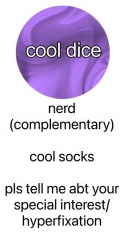
ok here i go!
Team Fortress 2 is a 2007 multiplayer first-person shooter game developed and published by Valve Corporation. It is the sequel to the 1996 Team Fortress mod for Quake and its 1999 remake, Team Fortress Classic. The game was released in October 2007 as part of The Orange Box for Windows and the Xbox 360, and ported to the PlayStation 3 in December 2007. It was released as a standalone game for Windows in April 2008, and updated to support Mac OS X in June 2010 and Linux in February 2013. It is distributed online through Valve's digital retailer Steam, with Electronic Arts managing retail and console editions.
Players join one of two teams—RED or BLU—and choose one of nine character classes to play as, with game modes including capture the flag and king of the hill. Development was led by John Cook and Robin Walker, the developers of the original Team Fortress mod. Team Fortress 2 was announced in 1998 under the name Team Fortress 2: Brotherhood of Arms. Initially, the game had more realistic, militaristic visuals and gameplay, but this changed over the protracted nine years of development. After Valve released no information for six years, Team Fortress 2 regularly featured in Wired News' annual vaporware list among other entries. Finally released on the Source game engine in 2007, Team Fortress 2 would preserve much of the core class-based gameplay of its predecessors while featuring an overhauled, cartoon-like visual style influenced by the works of J. C. Leyendecker, Dean Cornwell, and Norman Rockwell, alongside an increased focus on the visual and verbal characterization of its playable classes and what the developers have described as a 1960s spy movie aesthetic.
Team Fortress 2 has received critical acclaim for its art direction, gameplay, humor, and use of character in a wholly multiplayer game, and since its release has been referred to as one of the greatest video games ever created. The game continues to receive official Valve server support as of January 2023, in addition to new content being released on a seasonal basis in the form of submissions made through the Steam Workshop. In June 2011, the game became free-to-play, supported by microtransactions for in-game cosmetics. A 'drop system' was also added and refined, allowing free-to-play users to periodically receive in-game equipment and items. Though the game has had an unofficial competitive scene since its release, both support for official competitive play through ranked matchmaking and an overhauled casual experience were added in July 2016. Since early 2020, the official Valve servers have seen an influx of bot accounts using cheat software, often inhibiting legitimate gameplay.
Gameplay
A group of RED players attack a BLU base on the map "Well".
In most game modes, BLU and RED compete for a combat-based objective. Players can choose to play as one of nine character classes in these teams, each with their own unique strengths, weaknesses, and weapon sets. In order to accomplish objectives efficiently, a balance of these classes is required due to how these strengths and weaknesses interact with each other in a team-based environment. Although the abilities of a number of classes have changed from earlier Team Fortress incarnations, the basic elements of each class have remained, that being one primary weapon, one secondary weapon, and one melee weapon. The game was released with six official maps, although over one hundred maps have since been included in subsequent updates, including community-created maps. When players choose a gamemode for the first time, an introductory video is played, showing how to complete its objectives. During matches, the Administrator, voiced by Ellen McLain, announces events over loudspeakers. The player limit for one match is 16 on the Xbox 360 and PlayStation 3, and 24 on the Windows edition. However, in 2008, the Windows edition was updated to include a server variable that allows for up to 32 players.
Team Fortress 2 is the first of Valve's multiplayer games to provide detailed statistics for individual players, such as the total amount of time spent playing as each class, most points obtained, and most objectives completed in a single life. Persistent statistics tell the player how they are performing in relation to these statistics, such as if a player comes close to their record for the damage inflicted in a round. Team Fortress 2 also features numerous achievements for carrying out certain tasks, such as achieving a certain number of kills or completing a round within a certain time. Sets of class-specific achievements have been added in updates, which can award weapons to the player upon completion. This unlockable system has since been expanded into a random drop system, whereby players can also obtain items simply by playing the game.
Game modes
Core game modes
Team Fortress 2 contains five core game modes.
Attack/Defend (A/D) is a timed game mode in which the BLU team's goal is to capture RED control points. The number of control points varies between maps, and the points must be captured by the BLU team in respective order. To capture a control point, a player must stand on it for a certain amount of time. This process can be sped up by more players on one team capturing a single point. Once a control point is captured by the BLU team, it cannot be re-captured by the RED team. The RED team's job is to prevent the BLU team from capturing all the control points before the time limit ends. Once a point is captured, the time limit will extend.
Capture the Flag (CtF) is a mode which revolves around the BLU and RED teams attempting to steal and capture the opposing team's flag, represented in-game as an intelligence briefcase. At the same time, both teams must defend their own intelligence. When the intelligence is dropped by the carrier – either by dying or dropping it manually, it will stay on the ground for 1 minute before returning to its original location if it is not picked up again. A team's intelligence can only be carried by the opposing team. The first team to capture the enemy's intelligence three times wins.
Control Points (CP) is a timed game mode where there are several control points placed around the map, with 3 or 5 control points in total depending on the map. These are referred to as "3CP" and "5CP," respectively. The game will start off with only the middle control point being available for capture, with the other control points split equally among both teams. Once this middle control point is captured, a team can begin capturing the enemy team's points in respective order. The time limit is extended on the capture of a control point by either team. For a team to win, they must capture all the control points within the time limit.
King of the Hill (KOTH) is a timed game mode that contains a single control point at the middle of the map that can be captured by both the RED and BLU teams. Upon capturing the control point, a team-specific timer starts counting down but stops upon the point being captured by the opposing team. The first team to have their timer count down to 0 wins.
Payload (PL) is a timed game mode where the BLU team must push an explosive cart along a track, while the RED team must prevent the cart from reaching their base. To push the cart, at least one BLU player must stay within the range of the cart, which will dispense health and ammo every few seconds. The cart's speed will increase as more BLU players attempt to push it. Payload maps have multiple "checkpoints" along the track. Once these checkpoints are captured, they may adjust the spawn locations of both teams. Capturing a checkpoint will also increase the time limit. If the cart is not pushed by the BLU team for 20 seconds, it will begin to move back to the last captured checkpoint, where it will stop. The RED team can stop the cart from being pushed by being within range of it. The RED team wins by preventing the cart from reaching the final checkpoint before time runs out.
Alternative game modes
There are several alternative game modes in Team Fortress 2. These modes consist of a small number of maps and detach from the core game modes in some way.
Arena is a special game mode in which players do not respawn upon death. A team can win either by eliminating all opposing players, or by claiming a single capture point that opens after a certain time has elapsed. This mode is currently unavailable through matchmaking, but is still accessible through community servers.
Mannpower is a mode in which players have access to a grappling hook and assorted power-ups laid around the map that grant unique abilities. While not bound to any specific mode, all current official Mannpower maps use a variation of Capture the Flag. In Mannpower's variation of Capture the Flag, both teams have an intelligence flag, and the first team to capture the enemy's intelligence ten times wins. The mode is heavily inspired by the Quake mod, Threewave CTF, a mod created by former Valve employee David Kirsch.
Medieval Mode is a mode in which players are restricted to using melee and support weapons, with certain exceptions for medieval-themed projectile weapons. While not bound to any specific mode, the only official Medieval Mode map uses a 3CP variation of Attack/Defend. If Medieval Mode is enabled on a map, select phrases spoken by players in the in-game text chat will be replaced with more thematic variants, such as "hello" being replaced with "well meteth".
PASS Time is a unique timed game mode inspired by rugby, developed by Valve, Bad Robot Interactive, and Escalation Studios. Three unique goals (the Run-In, Throw-In, and Bonus Goals) are placed on each team's side of the map. A single ball called the JACK will spawn at the center of the map, and players must pick it up and carry it to the opposing team's side. Players can score a goal by either carrying the JACK to a Run-In Goal or by throwing the JACK through the Throw-In Goal. Three goals can be scored by throwing the JACK through the Bonus Goal, which is much more difficult to score. To win, a team must either score five goals, or have the most goals when the timer runs out.
Payload Race, like Payload, has the main objective being to push a cart to a final checkpoint. Unlike Payload, both the RED and BLU teams are fighting to push their cart to the final checkpoint. There is only one checkpoint for each track, and there is no time limit. The team to reach their checkpoint first wins.
Player Destruction is a community-made game mode in which a player's death causes a pickup to appear. The first team to collect a set number of pickups and deliver them to a drop-off point wins the game. The players on each team with the most pickups are highlighted for everyone to see, and gain a passive healing effect for themselves and any nearby teammates.
Special Delivery is a mode similar to Capture the Flag, but there is only one neutral briefcase that can be picked up both the RED and BLU teams. Upon a team picking up the briefcase, the opposing team will be unable to pick up the briefcase until it has been dropped for 45 seconds and respawns as a neutral briefcase. A team wins by carrying the briefcase onto a loading platform, which will gradually rise until the platform reaches its peak.
Territorial Control consists of several control points spread out across a single map. Like Control Points, each point can be captured by either the RED or BLU teams. Unlike Control Points, only two points are accessible at a single time. Upon a team's successful capture of a point, the "stage" ends and the accessible capture points change. When a team only has control of a single control point, they are blocked from capturing the opposing team's control point and the team must wait until the time limit is up and the accessible capture points change. A team wins by capturing all the control points.
Other game modes
These modes are not categorized with the other modes, and instead have their own separate sections in the game.
Halloween Mode is a special mode that is enabled during the Halloween season, and allows the players access to more than 20 maps, Halloween-exclusive cosmetics, and challenges. For example, Halloween 2012 included a difficult Mann vs. Machine mission involving destroying more than 800 enemy forces. Owing to popular demand of the Halloween events, Valve later added the Full Moon event, an event that triggers around every full moon phase throughout the year, which allows players to equip Halloween-exclusive cosmetics. In 2013, Valve introduced an item called Eternaween, and upon use, allows players of a specific server to use Halloween-exclusive cosmetics for 2 hours.
Mann vs Machine, also known as MvM, is a cooperative game mode where players must defend their base from waves of robots modeled after all nine playable classes, and slow-moving tanks carrying bombs. Robots and tanks drop a currency referred to as Credits upon their death, which players can use to buy upgrades for themselves or their weapons. The players win upon successfully defending their base from the bomb until the last wave. A paid version of this game mode called "Mann Up" is also available, where players buy tickets to play "Tours of Duty", a collection of missions with the chance to win unique cosmetics and weapon skins upon completion.
Offline Practice Mode is just like any other multiplayer match, but it only consists of the player and bots. The number of bots, their difficulty, and the map can all be adjusted to a player's preference, though only a select amount of maps are available to play.
Training Mode exists to help new players get acquainted with basic controls, and teaches them the basics of four of the nine classes. It uses wooden dummies and bots to teach players the basic mechanics of classes and the game.
Competitive play
Team Fortress 2 is played competitively, through multiple leagues. The North American league, ESEA, supports a paid Team Fortress 2 league, with $42,000 in prizes for the top teams in 2017. While formalized competitive gameplay is very different from normal Team Fortress 2, it offers an environment with a much higher level of teamwork than in public servers. Most teams use voice chat to communicate, and use a combination of strategy, communication, and mechanical skill to win against other teams. Community-run competitive leagues also tend to feature restrictions such as item bans and class limits. These leagues are often supported by Valve via in-game medals (which are submitted via the Steam Workshop) and announcements on the official blog.
In April 2015, Valve announced that a dedicated competitive mode would be added to Team Fortress 2, utilizing skill-based matchmaking; closed beta testing began in the following year. The competitive mode was added in the "Meet Your Match" update, released on July 7, 2016. Ranked matches are played six-vs-six, with players ranked in thirteen tiers based on win/losses and an assessment of their skills. Ranked matchmaking will balance players based on their tiers and rating. A similar matchmaking approach has been added for casual games for matches of 12-vs-12 players. In order to join competitive matchmaking, players must have associated their Steam account with the Steam Guard Mobile Authenticator, as well as having a Team Fortress 2 "premium account", which is unlocked by either having bought the game before it went free-to-play or by having made an in-game item purchase since.
Formats
Team Fortress 2 is played in a variety of different formats, which dictate the maximum size and composition of a team and can drastically change the impact of a single player's gameplay or choice of class. The two most basic formats consist of 12v12 and 6v6 ("Sixes"), the two being used on official Valve servers for casual and competitive modes respectively with no additional limitations. Most competitive leagues host Sixes but include limits on certain classes and weapons to preserve traditional, skill-based playstyles, for example limiting the allowed amount of medics or demomen to one on either team or banning certain movement-enhancing weapons from use. Other popular formats include "Highlander", a 9v9 format with a limit of one player per each of the nine classes, as well as a Sixes-inspired 7v7 variant thereof known as "Prolander" to allow for strategically switching classes during a competitive game.
Characters and setting
From left to right: Pyro, Engineer, Spy, Heavy, Sniper, Scout, Soldier, Demoman, and Medic
Team Fortress 2 features nine playable classes, evenly split and categorized into "Offense", "Defense", and "Support". Each class has strengths and weaknesses and must work with other classes to be efficient, encouraging strategy and teamwork. Each class has at least three default weapons: a primary weapon, secondary weapon, and melee weapon. Some classes have additional slots for PDAs.
Offense
The Scout (Nathan Vetterlein) is an American baseball fan and street runner from Boston, Massachusetts who practiced running to "beat his mad dog siblings to the fray." He is a fast, agile character, who is armed by default with a scattergun, a pistol, and an aluminum baseball bat. The Scout can double jump, and counts as two people when capturing control points, thus doubling the capture speed, and when pushing the Payload cart.
The Soldier (Rick May) is an American jingoistic patriot from the Midwest who stylizes himself as a military man despite having never served in any branch of the Armed Forces. The Soldier is armed by default with a rocket launcher, a shotgun, and a folding shovel. He is both the second-slowest class in the game and the class with the second-highest health, after the Heavy Weapons Guy. The Soldier can use his rocket launcher to rocket jump to other locations at the cost of some health.
The Pyro (Dennis Bateman) is a pyromaniac of unknown gender and origin who wears a fire-retardant suit and a voice-muffling gas mask. By default, the Pyro is armed with a flamethrower, a shotgun, and a fire axe. In addition to simply flames, the Pyro's flamethrower can also produce a blast of compressed air that repels any nearby enemies and projectiles, and extinguishes burning teammates. The Pyro is deluded and believes they are living in a utopian fantasy world referred to as "Pyroland".
Defense
The Demoman (Gary Schwartz) is a Black Scottish, one-eyed, alcoholic demolitions expert from Ullapool, Scotland. Armed by default with a timed-fuse grenade launcher, a remotely-detonated "stickybomb" launcher, and a glass bottle of scrumpy, the Demoman can use his explosives to provide indirect fire and set traps. Similar to the Soldier's rocket jump, the Demoman can use his stickybomb launcher to "sticky jump" at the cost of some health.
The Heavy Weapons Guy, or simply the Heavy (Gary Schwartz), is a large Russian man from the Dzhugdzhur Mountains of the USSR. He is heavy in stature and accent, and is obsessed with firepower. He is the slowest class, and can both sustain and deal substantial amounts of damage. His default weapons consist of a minigun that he affectionately refers to as "Sasha", a shotgun, and his fists.
The Engineer (Grant Goodeve) is an American inventor, engineer, intellectual, and "good ol' boy" from Bee Cave, Texas. The Engineer can build structures to support his team: a sentry gun for defending key points, a health and ammunition dispenser, and a pair of teleporter modules (one entrance and one exit). The Engineer is armed by default with a shotgun, a pistol, a wrench that functions as both a melee weapon and to repair and upgrade his buildings, and two separate PDAs; one to erect his buildings and one to remotely destroy them.
Support
The Medic (Robin Atkin Downes) is a German doctor from Stuttgart with little regard for the Hippocratic Oath. He is equipped with a "Medi Gun" that can restore health to injured teammates. When healing teammates, the Medi Gun progressively builds an "ÜberCharge" meter, which, when fully charged, can be activated to provide the Medic and his patient with temporary invulnerability. The Medic is also equipped with a syringe gun and a bonesaw for situations in which he must fight without his teammates' protection. He keeps doves as pets, one of which is named Archimedes.
The Sniper (John Patrick Lowrie) is an ocker assassin born in New Zealand and raised in the Australian outback, equipped by default with a laser-sighted sniper rifle to shoot enemies from afar. Depending on how the player aims and fires, he can cause severe damage or an instant kill with a headshot. By default, he also carries a submachine gun and a kukri for close combat.
The Spy (Dennis Bateman) is a French covert operative whose equipment is designed for stealth and infiltration, including a cloaking device disguised as a wristwatch, an electronic sapper used to disable and destroy enemy Engineers' buildings, and a device hidden in his cigarette case that enables him to disguise himself as any player on either team. He is armed with a revolver and a butterfly knife, able to use the latter to instantly kill enemies by stabbing them in the back. He is the only character who does not wear any clothing in his team's bright color or a patch denoting his specialty, instead preferring a balaclava, business suit, necktie, and gloves in muted team-color hues. In the extended media it is revealed that the Spy is the father of the Scout.
Non-playable characters
Other characters include the Administrator (voiced by Ellen McLain), an unseen announcer who provides information about time limits and objectives to players, and her assistant Miss Pauling (Ashly Burch). The cast has expanded with Halloween updates, including the characters of the "Horseless Headless Horsemann" and Monoculus (Gary Schwartz). 2012 and 2013 saw the addition of Merasmus, the Bombinomicon, and Redmond, Blutarch, Zepheniah, and Gray Mann (the first three all played by Nolan North). Previous unused voicelines recorded by North were later used for Horseless Headless Horsemann seen in the 2019 map "Laughter" and a jack-o'-lantern resting atop the Payload cart in the 2020 map "Bloodwater". The character Davy Jones (voiced by Calvin Kipperman) made an appearance in the 2018 map "Cursed Cove".
In the video announcement for the "Jungle Inferno" update, Mann Co. CEO Saxton Hale, a hypermasculine Australian adventurer, is voiced by JB Blanc.
Setting
Logo and motto of the fictional Mann Co.
Although Team Fortress 2 is designed as an open-ended multiplayer experience without an active storyline, the game and additional material nonetheless feature a wider narrative centered around the fictional Mann Co., a large shipping and manufacturing company led by CEO Saxton Hale. The main PvP gamemodes are set during the "Gravel Wars", a conflict between the rival heirs Redmond "Red" and Blutarch "Blu" Mann for which the nine playable characters were hired out as mercenaries. Gray Mann later emerges as the third competitor, killing the other two brothers and forcing Hale to rehire the mercenaries to protect Mann Co. from Gray's robot army in the Mann vs Machine cooperative horde shooter mode.
Development
Origins
The original Team Fortress was developed by the Australian team TF Software, comprising Robin Walker and John Cook, as a free mod for the 1996 PC game Quake. In 1998, Walker and Cook were employed by Valve, which had just released its first game, Half-Life. Valve began developing Team Fortress 2 as an expansion pack for Half-Life using Valve's GoldSrc engine, and gave a release date for the end of the year. In 1999, Valve released Team Fortress Classic, a port of the original Team Fortress, as a free Half-Life mod. Team Fortress Classic was developed using the publicly available Half-Life software development kit as an example to the community and industry of its flexibility. Team Fortress 2 originally featured a realistic visual style.
Unlike Team Fortress, Valve originally planned Team Fortress 2 to have a modern war aesthetic. It would feature innovations including a command hierarchy with a Commander class, parachute drops over enemy territory, and networked voice communication. The Commander class played similarly to a real-time strategy game, with the player viewing the game from a bird's-eye perspective and issuing orders to players and AI-controlled soldiers.
Team Fortress 2 was first shown at E3 1999 as Team Fortress 2 Brotherhood of Arms, where Valve showcased new technologies including parametric animation, which blended animations for smoother, more lifelike movement, and Intel's multi-resolution mesh technology, which dynamically reduced the detail of distant on-screen elements to improve performance. The game earned several awards including Best Online Game and Best Action Game.
In mid-2000, Valve announced that Team Fortress 2 had been delayed for a second time. They attributed the delay to development switching to its new in-house engine, Source. Following the announcement, Valve released no news on the game for six years. Walker and Cook worked on various other Valve projects; Walker was project lead on Half-Life 2: Episode One and Cook worked on Valve's content distribution platform Steam. Team Fortress 2 became a prominent example of vaporware, a long-anticipated game that had seen years of development, and was often mentioned alongside another much-delayed game, Duke Nukem Forever. Walker said that Valve built three or four different versions of Team Fortress 2 before settling on their final design. Shortly before the release of Half-Life 2 in 2004, Valve's marketing director Doug Lombardi confirmed that Team Fortress 2 was still in development.
Final design and release
Valve reintroduced Team Fortress 2 at the July 2006 EA Summer Showcase event. Departing from the realistic visual design of other Valve games, Team Fortress 2 features a cartoon-like visual style influenced by 20th-century commercial illustrations and the artwork of J. C. Leyendecker, Dean Cornwell, and Norman Rockwell, achieved through Gooch shading. The game debuted with the Source engine's new dynamic lighting, shadowing and soft particle technologies alongside Half-Life 2: Episode Two. It was the first game to implement the Source engine's new Facial Animation 3 features.
Valve abandoned the realistic style when it became impossible to reconcile it with the unrealistic gameplay, with opposing armies having constructed elaborate bases directly next to each other. The Commander class was abandoned as other players would simply refuse to follow their orders.
Valve designed each character, team, and equipped weapon to be visually distinct, even at range; for example, the coloring draws attention to the chest area, bringing focus on the equipped weapon. The voices for each of the classes were based on imagining what people from the 1960s would expect the classes to have sounded like, according to writer Chet Faliszek.
The map design has an "evil genius" theme with archetypical spy fortresses, concealed within inconspicuous buildings such as industrial warehouses and farms to give plausibility to their close proximities; these bases are usually separated by a neutrally themed space. The bases hide exaggerated super weapons such as laser cannons, nuclear warheads, and missile launch facilities, taking the role of objectives. The maps have little visual clutter and stylized, almost impressionistic modeling, to allow enemies to be spotted more easily. The impressionistic design approach also affects textures, which are based on photos that are filtered and improved by hand, giving them a tactile quality and giving Team Fortress 2 its distinct look. The bases are designed to let players immediately know where they are. RED bases use warm colors, natural materials, and angular shapes, while BLU bases use cool colors, industrial materials, and orthogonal shapes.
During the July 2006 Electronic Arts press conference, Valve revealed that Team Fortress 2 would ship as the multiplayer component of The Orange Box. A conference trailer showcasing all nine of the classes demonstrated for the first time the game's whimsical new visual style. Valve's president, Gabe Newell, said that the team's goal was to create "the best-looking and best-playing class-based multiplayer game". A beta release of the entire game was made on Steam on September 17, 2007, for customers who had pre-purchased The Orange Box, who had activated their Black Box coupon, which was included with the ATI HD 2900XT Graphics cards, and for members of Valve's Cyber Café Program.
Team Fortress 2 was released on October 10, 2007, both as a standalone product via Steam and at retail stores as part of The Orange Box compilation pack, priced at each gaming platform's recommended retail price. The Orange Box also contains Half-Life 2, Half-Life 2: Episode One, Half-Life 2: Episode Two, and Portal. Valve offered The Orange Box at a ten percent discount for those who pre-purchased it via Steam before the October 10 release, as well as the opportunity to participate in the beta test.
Post-release
Since the release of Team Fortress 2, Valve has continually released free updates and patches through Steam for Windows, OS X, and Linux users; though most patches are used for improving the reliability of the software or to tweak gameplay changes, several patches have been used to introduce new features and gameplay modes, and are often associated with marketing materials such as comics or videos offered on the Team Fortress 2 website; this blog is also used to keep players up to date with the ongoing developments in Team Fortress 2. As of July 2012, each class has been given a dedicated patch that provides new weapons, items, and other gameplay changes; these class patches typically included the release of the class's "Meet the Team" video. Other major patches have included new gameplay modes including the Payload, Payload Race, Training, Highlander, Medieval, and Mann vs. Machine modes. Themed patches have also been released, such as a yearly Halloween-themed event called "Scream Fortress", where players may obtain unique items available only during a set period around the holiday. Other new features have given players the ability to craft items within the game from other items, trade items with other players, purchase in-game items through funds in Steam, and save and edit replay videos that can be posted to YouTube.
Valve has released tools to allow users to create maps, weapons, and cosmetic items through a contribution site; the most popular are added as official content for the game. This approach has subsequently created the basis for the Steam Workshop functionality of the software client. In one case, more than fifty users from the content-creation community worked with Valve to release an official content update in May 2013, with all of the content generated by these players. Valve reported that as of June 2013, over $10 million has been paid back to over 400 community members that have helped to contribute content to the game, including a total of $250,000 for the participants in the May 2013 patch. To help promote community-made features, Valve has released limited-time events, such as the "Gun Mettle" or "Invasion" events in the second half of 2015, also including the "Tough Break" update in December 2015, in which players can spend a small amount of money which is paid back to the community developers for the ability to gain unique items offered while playing on community-made maps during the event.
Development of the new content had been confirmed for the Xbox 360, while development for the PlayStation 3 was deemed "uncertain" by Valve. However, the PlayStation 3 version of Team Fortress 2 received an update that repaired some of the issues found within the game, ranging from graphical issues to online connectivity problems; this update was included in a patch that also repaired issues found in the other games within The Orange Box. The updates released on PC and planned for later release on Xbox 360 include new official maps and game modes, as well as tweaks to classes and new weapons that can be unlocked through the game's achievement system. The developers attempted to negotiate with Xbox 360 developer Microsoft to keep the Xbox 360 releases of these updates free, but Microsoft refused and Valve announced that they would release bundles of several updates together to justify the price. Because of the cost of patching during the seventh generation of video game consoles, Valve has been unable to provide additional patches to the Xbox 360 version since 2009, effectively cancelling development of the console versions. On March 29, 2023, the servers for the PlayStation 3 version of Team Fortress 2 went offline.
On June 10, 2010, Team Fortress 2 was released for OS X, shortly after the release of Steam for OS X. The release was teased by way of an image similar to early iPod advertising, showing a dark silhouette of the Heavy on a bright green background, his Sandvich highlighted in his hand. Virtual earbuds, which can be worn when playing on either OS X or Windows once acquired, were given to players playing the game on OS X before June 14, though the giveaway period was later extended to August 16.
On November 6, 2012, Valve announced the release of Team Fortress 2 for Linux as part of a restricted beta launch of Steam on the platform. This initial release of Steam and Team Fortress 2 was targeted at Ubuntu with support for other distributions planned for the future. Later, on December 20, 2012, Valve opened up access to the beta, including Team Fortress 2, to all Steam users without the need to wait for an invitation. On February 14, 2013, Valve announced the full release of Team Fortress 2 for Linux. From then to March 1, anyone who played the game on Linux would receive a free Tux penguin, which can be equipped in-game.
Team Fortress 2 was announced in March 2013 to be the first game to officially support the Oculus Rift, a consumer-grade virtual reality headset. A patch will be made to the client to include a "VR Mode" that can be used with the headset on any public server.
In April 2020, source code for 2018 versions Team Fortress 2 and Counter-Strike: Global Offensive leaked online. This created fears that malicious users would use the code to make remote code execution software and attack servers or players' computers. Several fan projects halted development until the impact of the leak could be determined. Valve confirmed the legitimacy of the code leaks, but stated they do not believe it affects servers and clients running the latest official builds of either game.
On May 1, 2020, shortly following the death of the voice actor of the Soldier, Rick May, Valve released an update to Team Fortress 2, adding a tribute to his voicework as the Soldier in the form of a new main menu theme (a rendition of Taps), as well as statues of the Soldier saluting, added to most of the official in-game maps. These statues all featured a commemorative plaque dedicated to May and lasted through the end of the month. One of these statues, appearing on the map "cp_granary", the setting of the "Meet the Soldier" short video, was made permanent in an August 21 update.
Free-to-play
On June 23, 2011, Valve announced that Team Fortress 2 would become free to play. Unique equipment including weapons and outfits would be available as microtransactions through the in-game store, tied through Steam. Walker stated that Valve would continue to provide new features and items free. Walker stated that Valve had learned that the more players Team Fortress 2 had, the more value it had for each player.
The move came a week after Valve introduced several third-party free-to-play games to Steam and stated they were working on a new free-to-play game. Within nine months of becoming free to play, Valve reported that revenue from Team Fortress 2 had increased by a factor of twelve.
Bot accounts and "#SaveTF2"
Since early 2020, Team Fortress 2 has endured large amounts of bot accounts entering Valve casual matchmaking servers. Though bot accounts had been an issue in Team Fortress 2 for some time prior to this, multiple sources began to report a spike in activity for these bot accounts. The activities of these bots have included forcibly crashing servers, spamming copypastas in the text chats of matches, assuming other players' usernames, and the usage of aimbots. Additionally, some bots were programmed taking advantage of a TF2 source code leak that Valve had confirmed in April 2020. A common bot that exploited this leak used the Sniper class, allowing them to exploit the "headshot" mechanic to instantly kill enemy players from across the map regardless of direction they were aiming.
On June 16, 2020, Valve responded to this by restricting accounts that have not paid for Mann Co. Store items or purchased Team Fortress 2 prior to the game becoming free-to-play from the use of both voice and text chat in game. On June 24, all players were restricted from changing their Steam username while connected to any Valve matchmaking server or any server with display name updates disabled.The change was implemented to prevent bots from changing their display name to impersonate legitimate players, which allowed the bots to avoid being kicked due to the confusion caused by their duplicate name. On voting, changes were also introduced to prevent bots from spamming this functionality in an attempt to prevent real players from using kicking bots.
Approximately one year later, on June 22, 2021, additional changes were implemented to discourage bot activity. Another YouTuber, Toofty, posted a video that provided input from several of those that were behind the bot problem; reasons given ranged from grieving against Valve developers to simply finding the disruption fun to watch. These are issues normally dealt with by a game's developer but Valve's lack of response allowed their activities to go unchecked for two years.
These issues remained ongoing as of May 2022, prompting YouTuber SquimJim to uploaded a video to his YouTube channel encouraging his viewers to express their grievances to Valve and news outlets through letters. After receiving over a hundred news tips, IGN journalist Rebekah Valentine wrote of her experience with trying to play the game. She remarked that the game was "literally unplayable" on official Valve servers, forcing many players to join unofficial community servers instead. She also said that some bots would "...spam chat with homophobic or racist remarks, outside links, or just plain rude or obnoxious messages". In response to these issues, Robin Atkin Downes, voice actor for the Medic, also reached out to his contacts at Valve for a response, and encouraged fans to continue making their voices heard in a "peaceful, passionate manner".
On May 26, 2022, members of the TF2 community held a "peaceful protest" on Twitter using the hashtag #savetf2 with the goal of getting a response from Valve regarding the issues. With the hashtag trending on Twitter, Valve responded, saying "TF2 community, we hear you! We love this game and know you do, too. We see how large this issue has become and are working to improve things."
Across June and July 2022, Valve released a number of patches to help players deal with the bot issue, such as improving the game's vote kicking system so that both teams can vote to kick players accused of abusive behavior at the same time. Valve took down the servers for five minutes in August 2022, during which a number of bans were issued via Valve Anti-Cheat to players that were known to be running these bots, effectively ending the problem. Valve's efforts helped to increase the player count in the months that followed.
On February 9, 2023, a blog post was shared on the official website, saying that a new "update-sized" update was coming to the game. The update will be released sometime around summer and will use community-made content submitted before May 1st. However, shortly after the post was made, Valve silently changed the message to say "holiday-sized update" instead. The update was released on July 13, 2023.
Tie-in materials
Beginning in May 2007, to promote the game, Valve began a ten-video advertisement series referred to as "Meet the Team". Constructed using Source Filmmaker and using more detailed character models, the series consists of short videos introducing each class and displaying their personalities and abilities. The videos are usually interspersed with simulated gameplay footage. The format of the videos varies greatly; the first installment, "Meet the Heavy", depicts him being interviewed, while "Meet the Soldier" shows the Soldier giving a misinformed lecture on Sun Tzu to a row of severed BLU heads as if they were raw recruits. He claims Sun Tzu "invented" fighting, then further confuses this claim with the story of Noah and his Ark. The videos were generally released through Valve's official YouTube channels, though in one notable exception, the "Meet the Spy" video was leaked onto YouTube, several days before its intended release.
Early "Meet the Team" videos were based on the audition scripts used for the voice actors for each of the classes; the "Meet the Heavy" script is nearly word-for-word a copy of the Heavy's script. Later videos, such as "Meet the Sniper", contain more original material. The videos have been used by Valve to help improve the technology for the game, specifically improving the facial animations, as well as a source of new gameplay elements, such as the Heavy's "Sandvich" or the Sniper's "Jarate". The final video in the Meet the Team series, "Meet the Pyro", was released on June 27, 2012. Gabe Newell has stated that Valve used the "Meet the Team" series as a means of exploring the possibilities of making feature film movies themselves. He believes that only game developers themselves have the ability to bring the interesting parts of a game to a film, and suggested that this would be the only manner through which a Half-Life-based movie would be made. A fifteen-minute short, "Expiration Date", was released on June 17, 2014. The shorts were made using Source Filmmaker, which was officially released and has been in open beta as of July 11, 2012.
In more recent major updates to the game, Valve has presented teaser images and online comic books that expand the fictional continuity and characters of Team Fortress 2, as part of the expansion of the "cross-media property", according to Newell. In August 2009, Valve brought aboard American comic writer Michael Avon Oeming to teach Valve "about what it means to have a character and do character development in a comic format, how you do storytelling". "Loose Canon", a comic associated with the Engineer Update, establishes the history of RED versus BLU as a result of the last will and testament of Zepheniah Mann in 1890, forcing his two bickering sons Blutarch and Redmond to vie for control of Zepheniah's lands between them; both have engineered ways of maintaining their mortality to the present, waiting to outlast the other while employing separate forces to try to wrest control of the land. This and other comics also establish other background characters such as Saxton Hale, the CEO of Mann Co., the company that provides the weapons for the two sides and was bequeathed to one of Hale's ancestors by Zepheniah, and the Administrator, the game's announcer, that watches over, encourages the RED/BLU conflict, and keeps each side from winning. The collected comics were published by Dark Horse Comics in Valve Presents: The Sacrifice and Other Steam-Powered Stories, a volume along with other comics created by Valve for Portal 2 and Left 4 Dead, and released in November 2011. Cumulative details in updates both in-game and on Valve's sites from 2010 through 2012 were part of a larger alternate reality game preceding the reveal of the Mann vs. Machine mode, which was revealed as a co-op mode on August 15, 2012.
Marketing and microtransactions
Valve had provided other promotions to draw players into the game. Valve has held weekends of free play for Team Fortress 2 before the game was made free-to-play. Through various updates, hats and accessories can be worn by any of the classes, giving players an ability to customize the look of their character, and extremely rare hats named "Unusuals" have particle effects attached to it and are only obtainable through opening "crates" or trading with other players. New weapons were added in updates to allow the player to choose a loadout and play style that best suits them.
Hats and weapons can be gained as a random drop, through the crafting/trading systems, or via cross-promotion: Limited-edition hats and weapons have been awarded for pre-ordering or gaining Achievements in other content from Steam, both from Valve or other third-party games such as Sam & Max: The Devil's Playhouse, Worms Reloaded, Killing Floor, or Poker Night at the Inventory (which features the Heavy class as a character). According to Robin Walker, Valve introduced these additional hats as an indirect means for players to show status within the game or their affiliation with another game series simply by visual appearance.
The Pyro, Heavy, and Spy all function as a single playable character in the PC release of Sonic & All-Stars Racing Transformed. The Pyro, Medic, Engineer, and Heavy appear as playable characters in Dungeon of the Endless. The Pyro was added as a playable character to Killing Floor in 2010, along with appearing as a henchman in the 2021 game Evil Genius 2.
The game's first television commercial premiered during the first episode of the fifth season of The Venture Bros. in June 2013, featuring in-game accessories that were created with the help of Adult Swim.
Items and economy
In Team Fortress 2, players can trade with others for items such as weapons and cosmetics. This functionality was added in the 2010 Mann-Conomy Update, alongside being able to purchase items through an in-game store with real money. Operating largely through informal gray markets before the introduction of the official Steam Community Market, trading items made players susceptible to fraud.
Team Fortress 2 features an in-built item valuing system known as an item quality, assigned to a given instance of an item through a variety of different means and ranging from "Normal" items used as the stock weapons of each class, to "Unique" items used as the base obtainable items from the item drop or achievement systems, to far rarer qualities such as "Strange", "Unusual" or "Decorated" which feature special cosmetic effects that can immensely increase the market value of a given item; Strange items keep track of kills or other objectives achieved while equipped in-game while Unusual items feature item-specific particle effects, with both Strange and Unusual items being obtainable through rare crafting items or randomly obtained in place of the far more common Unique items. Decorated items are instead redeemed from rare items known as "war paints", awarding the player a weapon retextured with a pseudo-random cosmetic skin. Other qualities include "Vintage", awarded to older items to compensate for changes in obtainability, and "Collector's", created through combining 200 Unique instances of a single item.
Cosmetics and war paints are typically released through seasonal "cases" that award a random item from an associated collection unique to the given season of a specific year. Such items are additionally assigned a "grade" from "Civilian" to "Mercenary" to track their relative rarity within a collection.
Third-party websites such as the crowd-sourced backpack.tf have been created to aid users in trading, as well as track the value of in-game items. Crate keys, crafting metal, and in-game items such as an "earbuds" cosmetic (also referred to as "buds") are all used as currency due to their value.
The economy of Team Fortress 2 has received significant attention from economists, journalists, and users, due to its relative sophistication and the value of many of its in-game items. It has often been the subject of study. It operates on a system of supply and demand, barter, and scarcity value, akin to many real-world economies such as that of the United States. In 2011, it was reported that the economy of Team Fortress 2 was worth over US$50 million.
2019 Crate bug
On July 25, 2019, a bug was mistakenly included in an update - if players unboxed certain older series of Crates, they would be guaranteed to receive an Unusual-grade cosmetic item, compared to the usual 1% chance of obtaining an Unusual-grade cosmetic item from a Crate. This damaged the in-game economy, causing Unusual-grade cosmetic items able to be unboxed from these Crates to drop substantially in value. The incident has been nicknamed "The Crate Depression" (a pun on "Crate" and "The Great Depression") by fans. On July 26, 2019, this bug was fixed. Users who received any Unusual-grade cosmetic items from the bug were restricted from trading them, with Valve later announcing in an official statement on August 2, 2019 that the first Unusual-grade item any player received from the bug is tradable, with any subsequent Unusual-grade items being permanently untradeable and only usable by the player who received them.
Reception and legacy
See also: Critical reception of The Orange Box
Best Action Game (1999)
Best Online Multiplayer (1999)
IGN
Best Artistic Design (2007)
1UP.com
Best Multiplayer Experience (2007)
Best Artistic Direction (2007)
GameSpy
Best Multiplayer Game of the Year (2007)
Most Unique Art Style (2007)
Team Fortress 2 received widespread critical acclaim, with overall scores of 92/100 "universal acclaim" on Metacritic. Many reviewers praised the cartoon-styled graphics, and the resulting light-hearted gameplay, and the use of distinct personalities and appearances for the classes impressed a number of critics, with PC Gamer UK stating that "until now multiplayer games just haven't had it". Similarly, the game modes were received well, GamePro described the settings as focusing "on just simple fun", while several reviewers praised Valve for the map "Hydro" and its attempts to create a game mode with variety in each map. Additional praise was bestowed on the game's level design, game balance and teamwork promotion. Team Fortress 2 has received several awards individually for its multiplayer gameplay and its graphical style, as well as having received a number of "game of the year" awards as part of The Orange Box.
Although Team Fortress 2 was well received, its removal of class-specific grenades, a feature of previous Team Fortress incarnations, was controversial amongst reviewers. IGN expressed some disappointment over this, while conversely, PC Gamer UK approved, stating "grenades have been removed entirely—thank God". Some further criticism came over a variety of issues, such as the lack of extra content such as bots (although Valve has since added bots in an update), problems of players finding their way around maps due to the lack of a minimap, and some criticism of the Medic class being too passive and repetitive in his nature. The Medic class has since been re-tooled by Valve, giving it new unlockable weapons and abilities.
With the "Gold Rush Update" in April 2008, Valve had started to add fundamentals of character customization through unlockable weapons for each class, which continued in subsequent updates, most notably the "Sniper vs. Spy Update" in April 2009, which introduced unlockable cosmetic items into the game. Further updates expanded the number of weapons and cosmetics available, but also introduced monetization options, eventually allowing it to go free-to-play. To this end, Team Fortress 2 is considered one of the first games to offer games as a service, a feature which would become more prevalent in the 2010s.
Fans of Team Fortress Classic have made a total conversion mod of Team Fortress 2 titled Team Fortress 2 Classic, which seeks to marry gameplay elements and concepts from both entries alongside scrapped ideas from the sequel's development cycle and several entirely original additions.
3 notes
·
View notes
Note
team fortress 2 !!
Team Fortress 2 is a 2007 multiplayer first-person shooter game developed and published by Valve Corporation. It is the sequel to the 1996 Team Fortress mod for Quake and its 1999 remake, Team Fortress Classic. The game was released in October 2007 as part of The Orange Box for Windows and the Xbox 360, and ported to the PlayStation 3 in December 2007.[1][2] It was released as a standalone game for Windows in April 2008, and updated to support Mac OS X in June 2010 and Linux in February 2013. It is distributed online through Valve's digital retailer Steam, with Electronic Arts managing retail and console editions.
Players join one of two teams—RED or BLU—and choose one of nine character classes to play as, with game modes including capture the flag and king of the hill. Development was led by John Cook and Robin Walker, the developers of the original Team Fortress mod. Team Fortress 2 was announced in 1998 under the name Team Fortress 2: Brotherhood of Arms. Initially, the game had more realistic, militaristic visuals and gameplay, but this changed over the protracted nine years of development. After Valve released no information for six years, Team Fortress 2 regularly featured in Wired News' annual vaporware list among other entries. Finally released on the Source game engine in 2007, Team Fortress 2 would preserve much of the core class-based gameplay of its predecessors while featuring an overhauled, cartoon-like visual style influenced by the works of J. C. Leyendecker, Dean Cornwell, and Norman Rockwell, alongside an increased focus on the visual and verbal characterization of its playable classes and what the developers have described as a 1960s spy movie aesthetic.
Team Fortress 2 has received critical acclaim for its art direction, gameplay, humor, and use of character in a wholly multiplayer game,[3][4][5][6] and since its release has been referred to as one of the greatest video games ever created.[7][8][9] The game continues to receive official Valve server support as of January 2023, in addition to new content being released on a seasonal basis in the form of submissions made through the Steam Workshop. In June 2011, the game became free-to-play, supported by microtransactions for in-game cosmetics. A 'drop system' was also added and refined, allowing free-to-play users to periodically receive in-game equipment and items. Though the game has had an unofficial competitive scene since its release, both support for official competitive play through ranked matchmaking and an overhauled casual experience were added in July 2016.[10] Since early 2020, the official Valve servers have seen an influx of bot accounts using cheat software, often inhibiting legitimate gameplay.[11]
Gameplay
A group of RED players attack a BLU base on the map "Well".
In most game modes, BLU and RED compete for a combat-based objective.[4] Players can choose to play as one of nine character classes in these teams, each with their own unique strengths, weaknesses, and weapon sets. In order to accomplish objectives efficiently, a balance of these classes is required due to how these strengths and weaknesses interact with each other in a team-based environment. Although the abilities of a number of classes have changed from earlier Team Fortress incarnations, the basic elements of each class have remained, that being one primary weapon, one secondary weapon, and one melee weapon.[12][13] The game was released with six official maps, although over one hundred maps have since been included in subsequent updates, including community-created maps.[14][15] When players choose a gamemode for the first time, an introductory video is played, showing how to complete its objectives. During matches, the Administrator,[16] voiced by Ellen McLain, announces events over loudspeakers.[17] The player limit for one match is 16 on the Xbox 360 and PlayStation 3, and 24 on the Windows edition.[18] However, in 2008, the Windows edition was updated to include a server variable that allows for up to 32 players.[19]
Team Fortress 2 is the first of Valve's multiplayer games to provide detailed statistics for individual players, such as the total amount of time spent playing as each class, most points obtained, and most objectives completed in a single life. Persistent statistics tell the player how they are performing in relation to these statistics, such as if a player comes close to their record for the damage inflicted in a round.[14] Team Fortress 2 also features numerous achievements for carrying out certain tasks, such as achieving a certain number of kills or completing a round within a certain time. Sets of class-specific achievements have been added in updates, which can award weapons to the player upon completion. This unlockable system has since been expanded into a random drop system, whereby players can also obtain items simply by playing the game.[20]
Game modes
Core game modes
Team Fortress 2 contains five core game modes.
Attack/Defend (A/D) is a timed game mode in which the BLU team's goal is to capture RED control points. The number of control points varies between maps, and the points must be captured by the BLU team in respective order. To capture a control point, a player must stand on it for a certain amount of time. This process can be sped up by more players on one team capturing a single point. Once a control point is captured by the BLU team, it cannot be re-captured by the RED team. The RED team's job is to prevent the BLU team from capturing all the control points before the time limit ends. Once a point is captured, the time limit will extend.[21]
Capture the Flag (CtF) is a mode which revolves around the BLU and RED teams attempting to steal and capture the opposing team's flag, represented in-game as an intelligence briefcase. At the same time, both teams must defend their own intelligence. When the intelligence is dropped by the carrier – either by dying or dropping it manually, it will stay on the ground for 1 minute before returning to its original location if it is not picked up again. A team's intelligence can only be carried by the opposing team. The first team to capture the enemy's intelligence three times wins.[22]
Control Points (CP) is a timed game mode where there are several control points placed around the map, with 3 or 5 control points in total depending on the map. These are referred to as "3CP" and "5CP," respectively. The game will start off with only the middle control point being available for capture, with the other control points split equally among both teams. Once this middle control point is captured, a team can begin capturing the enemy team's points in respective order. The time limit is extended on the capture of a control point by either team. For a team to win, they must capture all the control points within the time limit.[21]
King of the Hill (KOTH) is a timed game mode that contains a single control point at the middle of the map that can be captured by both the RED and BLU teams. Upon capturing the control point, a team-specific timer sta
5 notes
·
View notes
Text
Download Teen Patti Gold New Version - Play 3 Patti Gold Mod APK Online
Introduction Teen Patti Gold has become a household name among card game enthusiasts. Offering a seamless blend of traditional Indian card games with modern technology, the latest version of Teen Patti Gold is here with exciting features. This article provides an in-depth look at the new version of Teen Patti Gold, the benefits of the 3 Patti Gold Mod APK, and how to download and play it online.

What is Teen Patti Gold?
Teen Patti Gold is a popular online card game inspired by the traditional Indian poker game, Teen Patti. With millions of players worldwide, it provides a realistic gaming experience, user-friendly interface, and engaging gameplay. Whether you are a beginner or a pro, Teen Patti Gold caters to all skill levels.
Why Download Teen Patti Gold New Version?
The new version of Teen Patti Gold comes packed with exciting updates to enhance your gaming experience. Here's why you should consider downloading it:
Enhanced Gameplay: The latest update offers smoother gameplay and faster loading times.
New Features: Includes tournaments, private tables, and multiple game modes.
Improved Graphics: High-quality visuals for an immersive gaming experience.
Secure Transactions: Added layers of security for in-app purchases and rewards.

Benefits of Teen Patti Gold Mod APK
The 3 Patti Gold Mod APK offers additional features not available in the standard version. Here’s what you can expect:
Unlimited Chips: Start your game with a massive advantage.
No Ads: Enjoy uninterrupted gameplay.
Access to Premium Features: Unlock exclusive game modes and customization options.
Offline Mode: Play your favorite game without an internet connection.
Disclaimer: Downloading mod APKs may violate the app's terms of service. Always choose trusted sources and use them responsibly.
How to Download Teen Patti Gold New Version?
Follow these steps to download and install Teen Patti Gold:
From Official App Stores:
Go to Google Play Store or Apple App Store.
Search for "Teen Patti Gold."
Click on the download button and install the game.
For 3 Patti Gold Mod APK:
Search for a reliable source to download the APK file.
Enable installation from unknown sources in your device settings.
Download and install the APK file.
Tips for Playing Teen Patti Gold Online
Understand the Rules: Familiarize yourself with Teen Patti rules to improve your strategy.
Practice Daily: Regular practice will help you master the game.
Manage Your Chips: Play wisely to ensure your chips last longer.
Invite Friends: Enjoy private matches with your friends for a fun experience.
Conclusion
Teen Patti Gold’s new version and 3 Patti Gold Mod APK are perfect for card game enthusiasts looking to elevate their gaming experience. With enhanced features, exciting gameplay, and the ability to play online or offline, it’s a must-try for both beginners and experienced players.
Download Teen Patti Gold today and join millions of players worldwide in this thrilling card game adventure!
#TeenPattiGold#DownloadTeenPatti#3PattiGoldModAPK#OnlineCardGames#TeenPattiGoldNewVersion#CardGameFans
1 note
·
View note